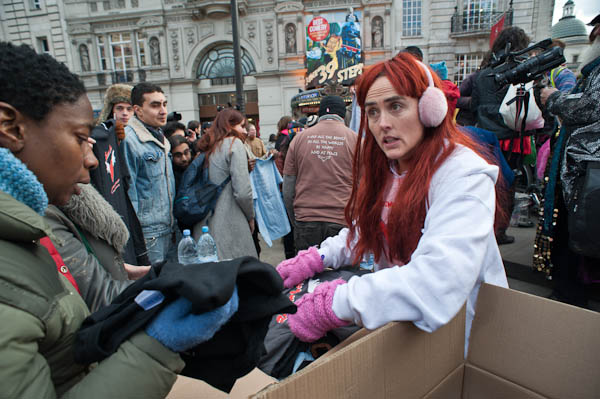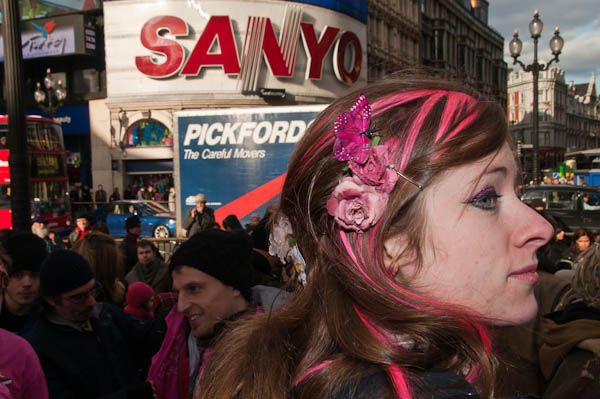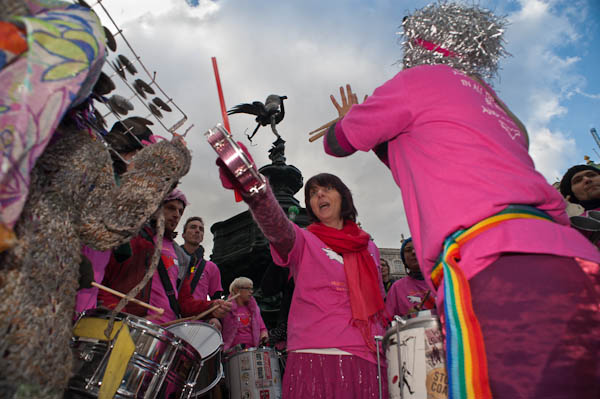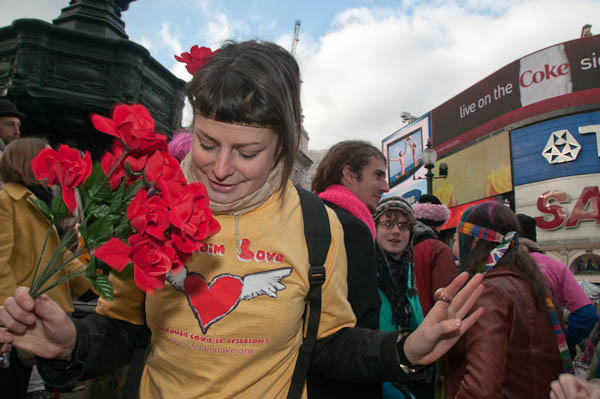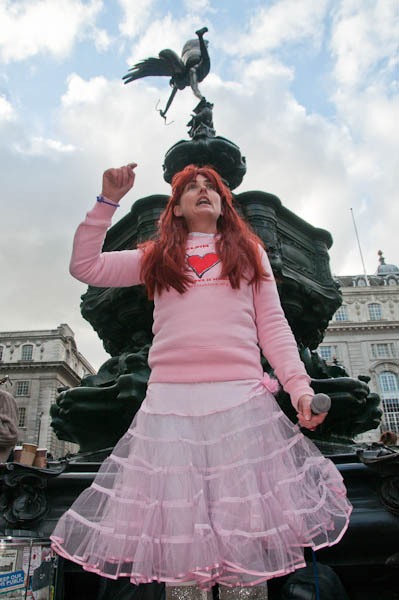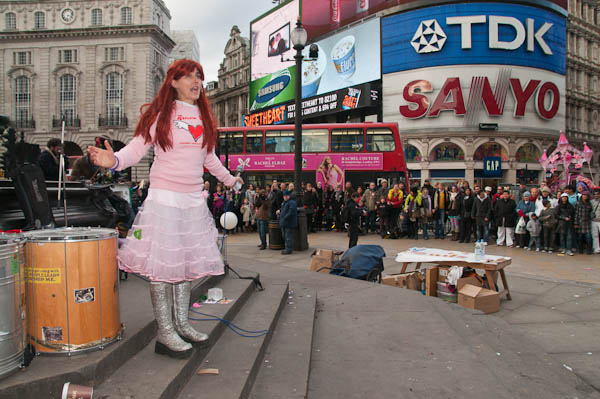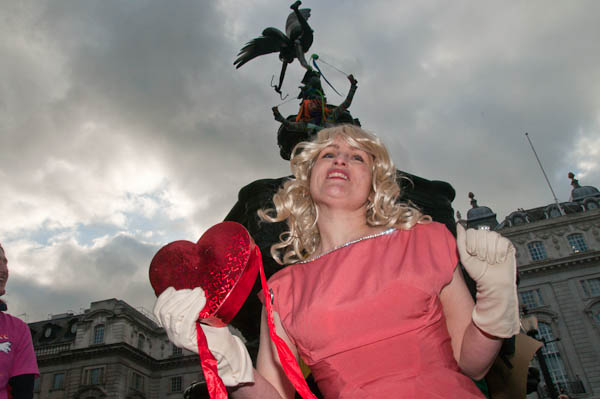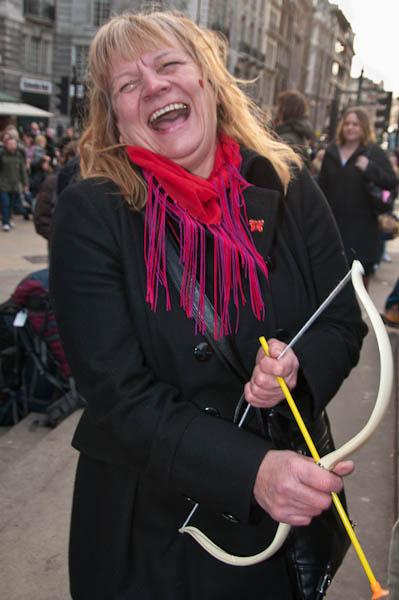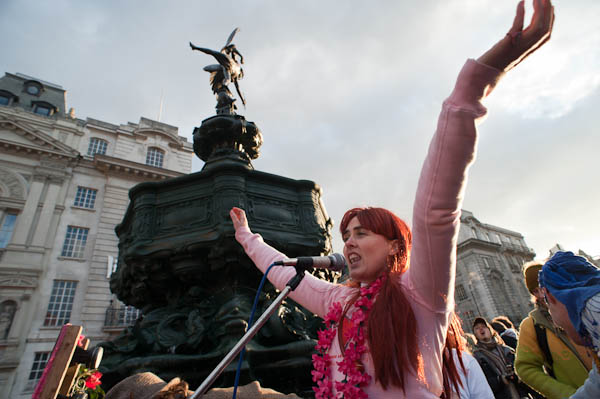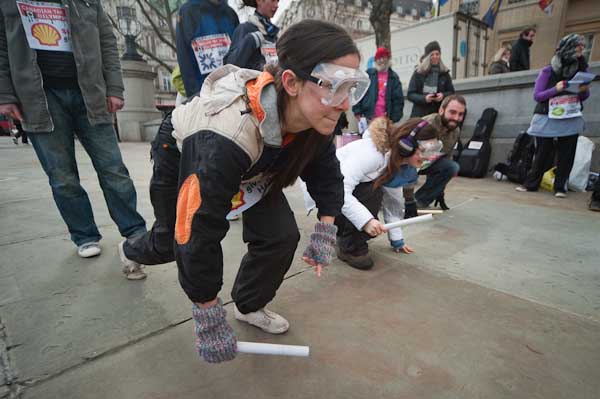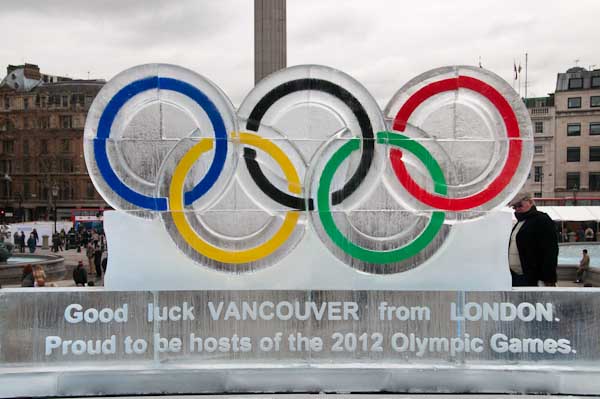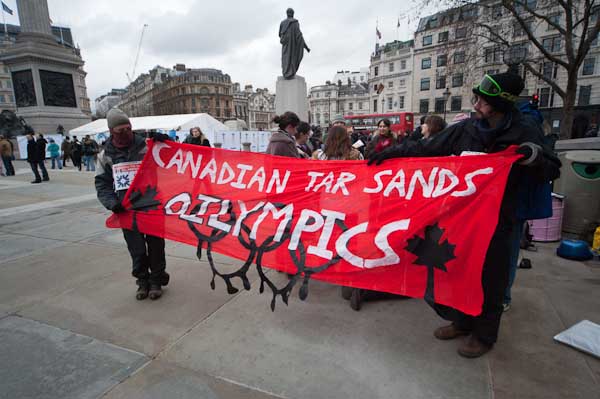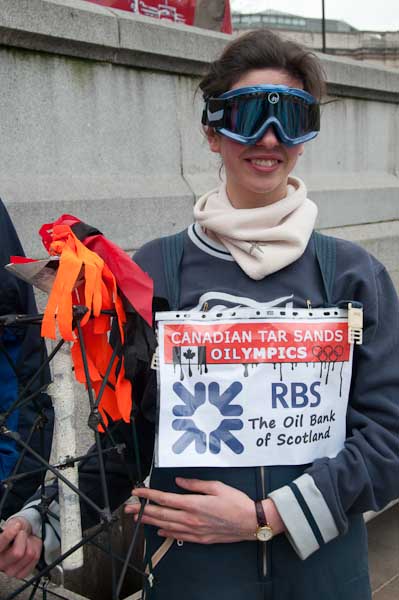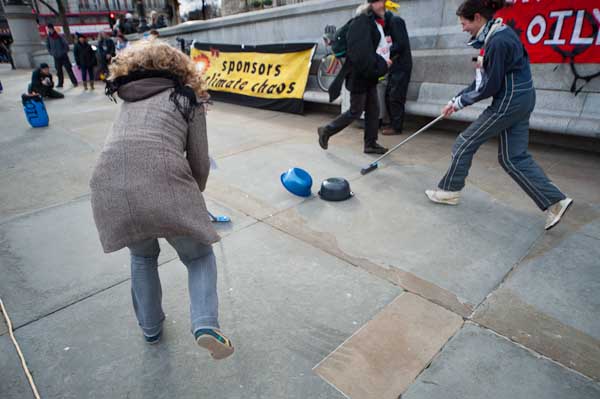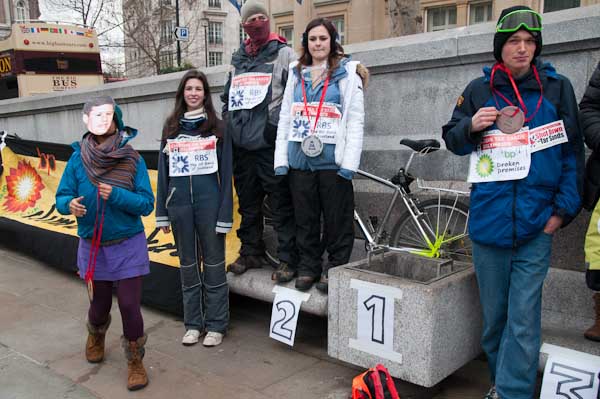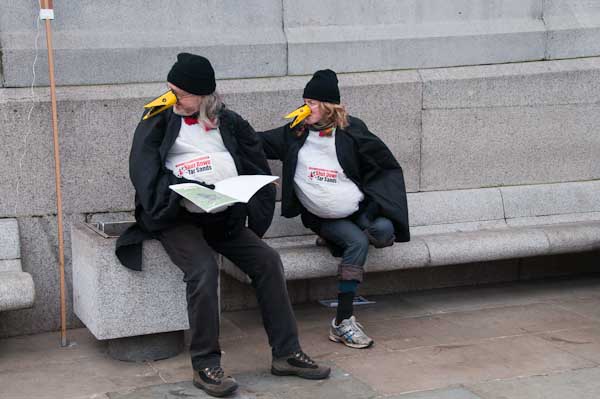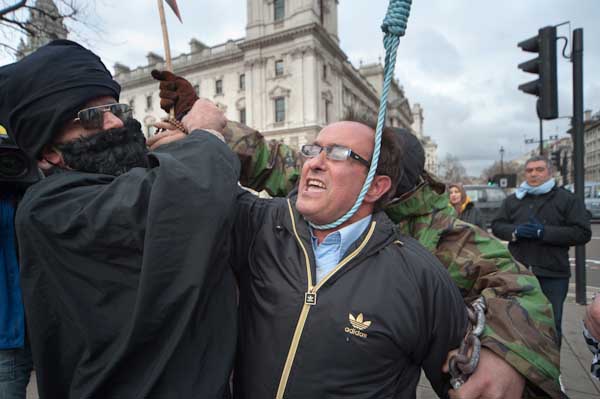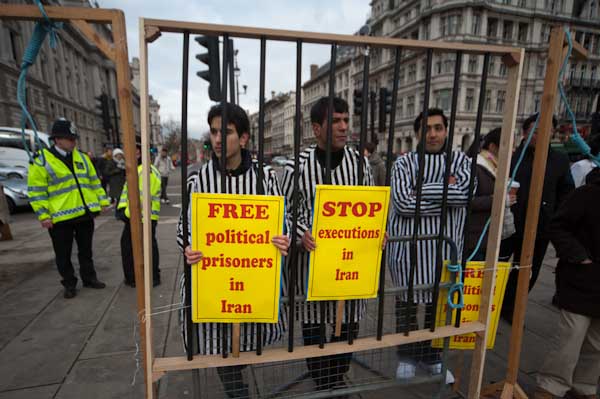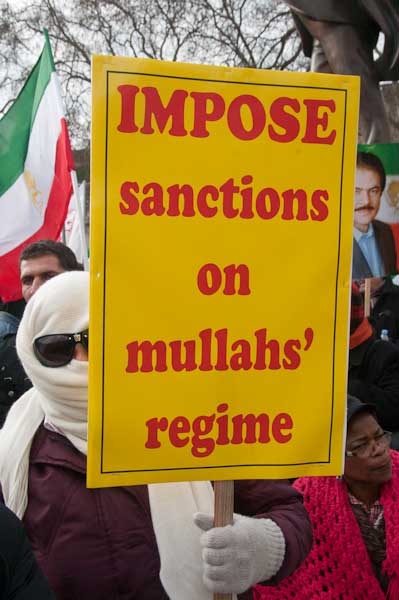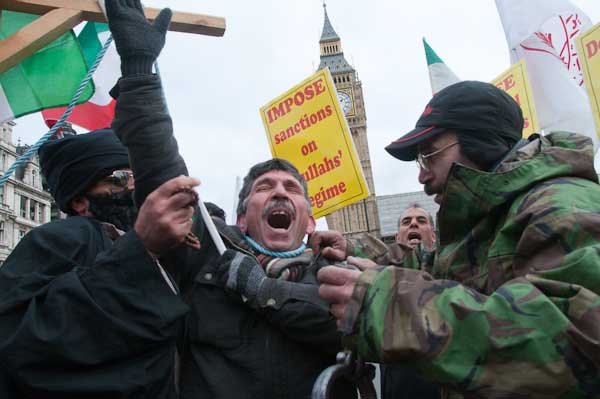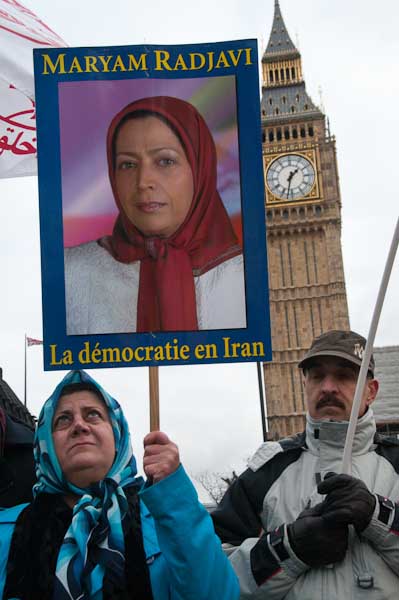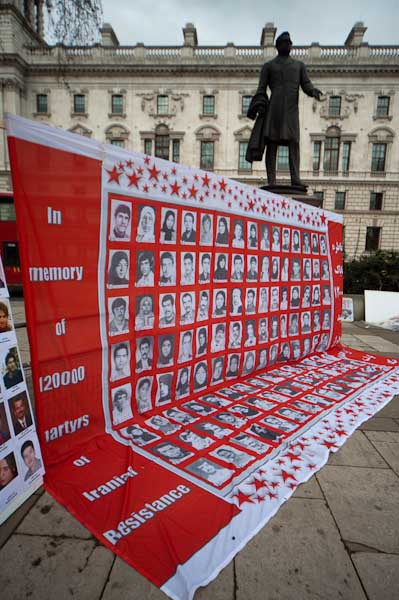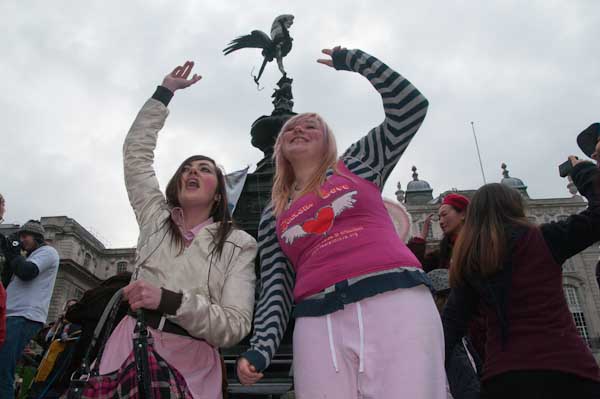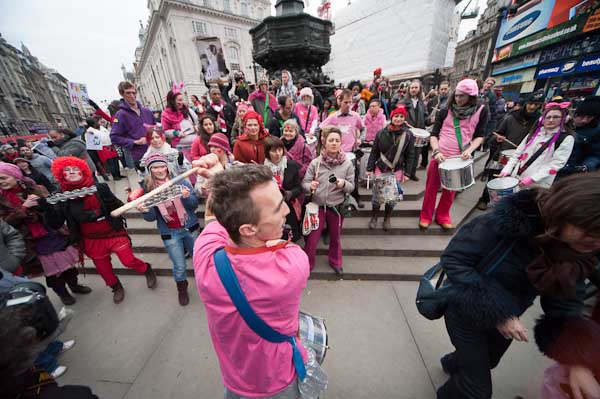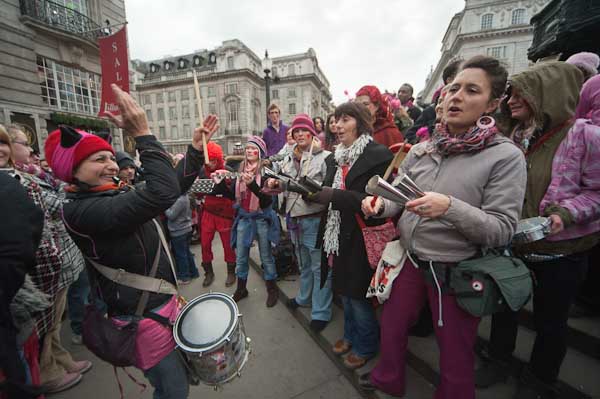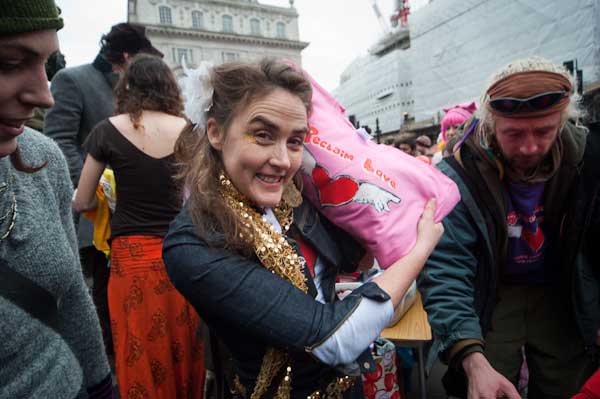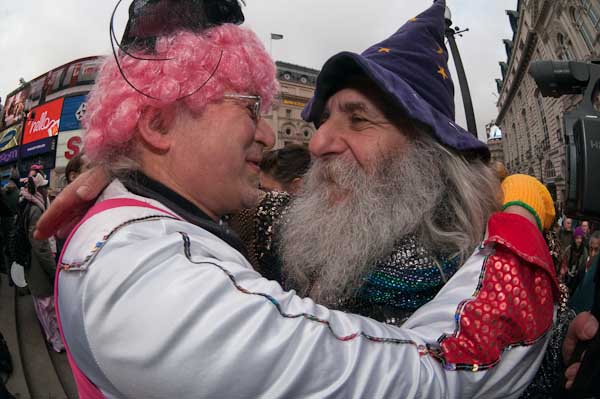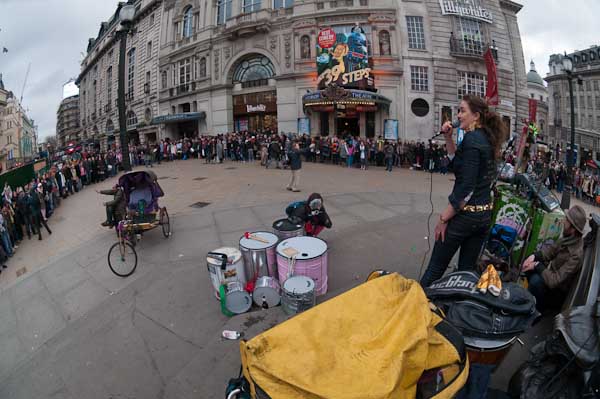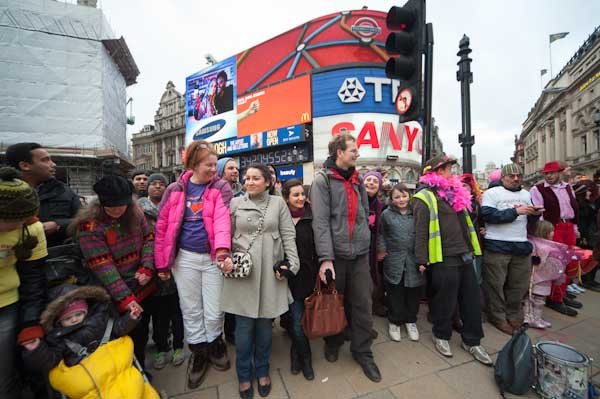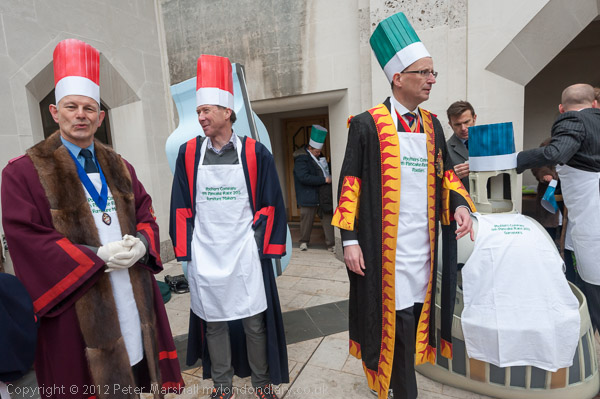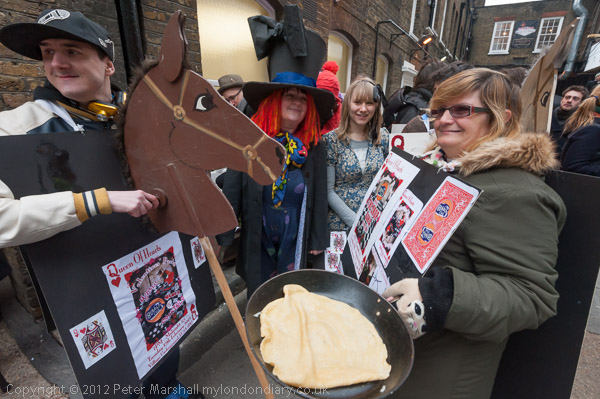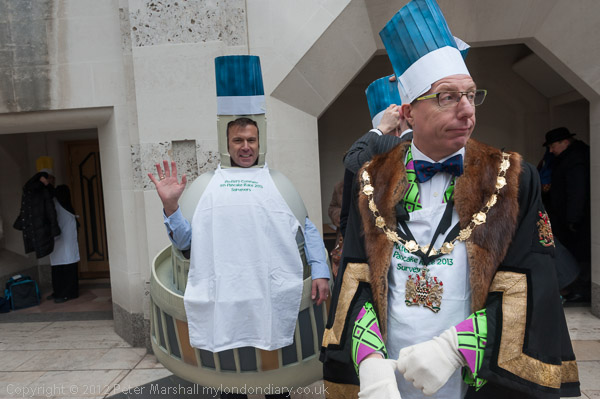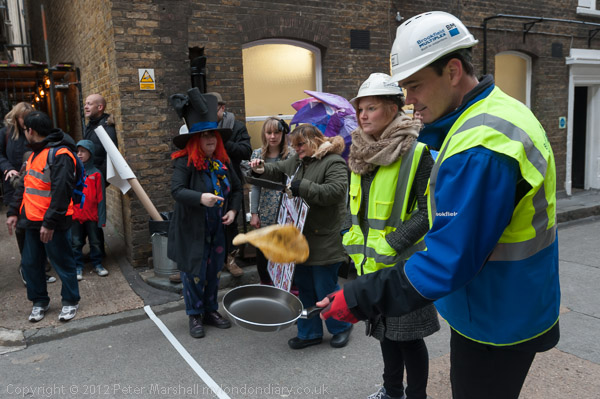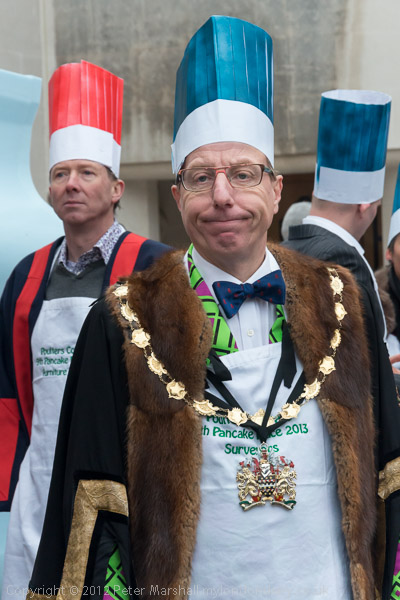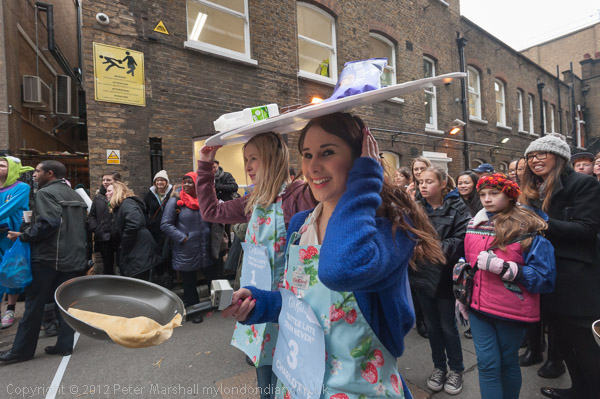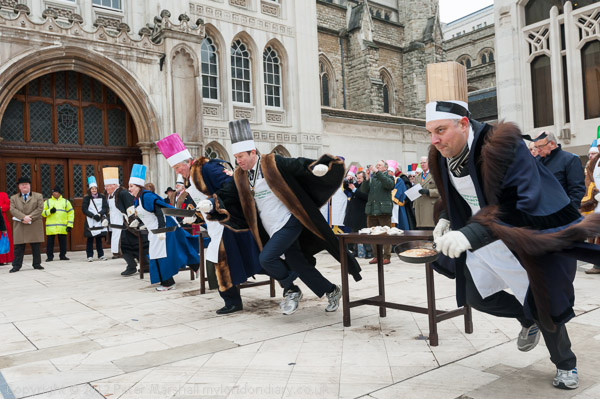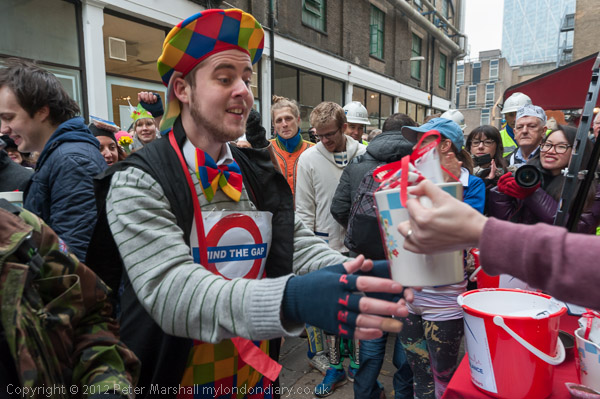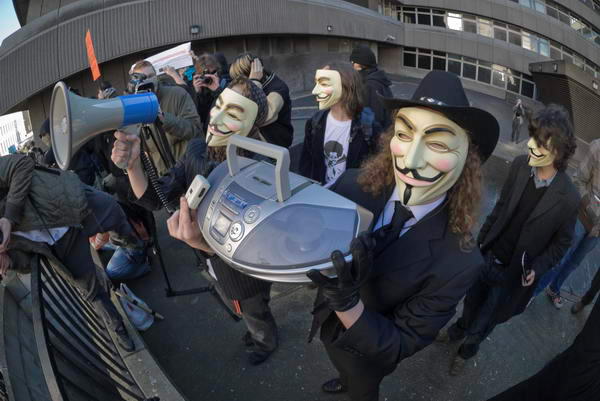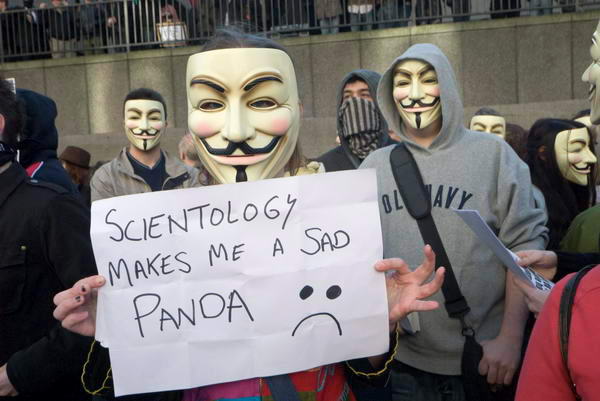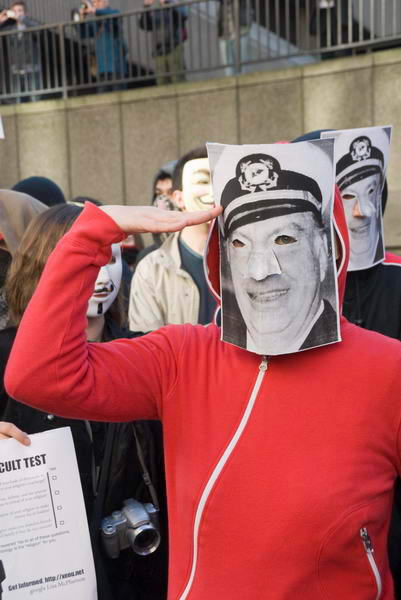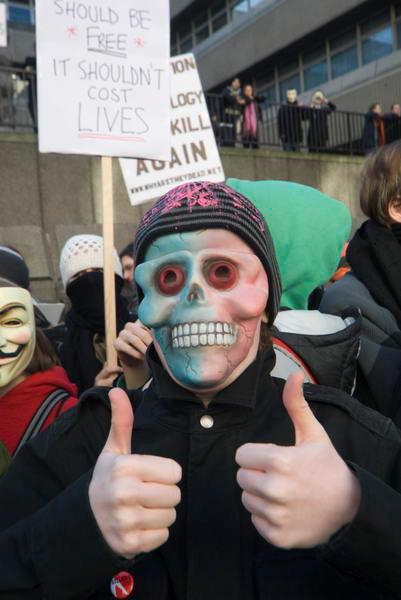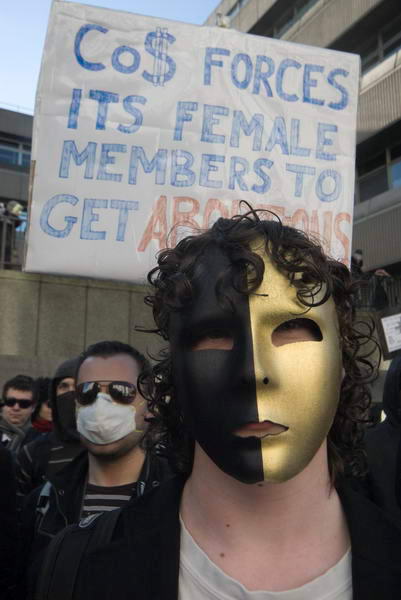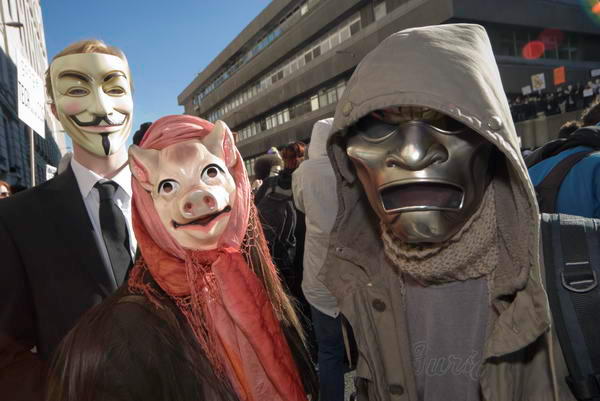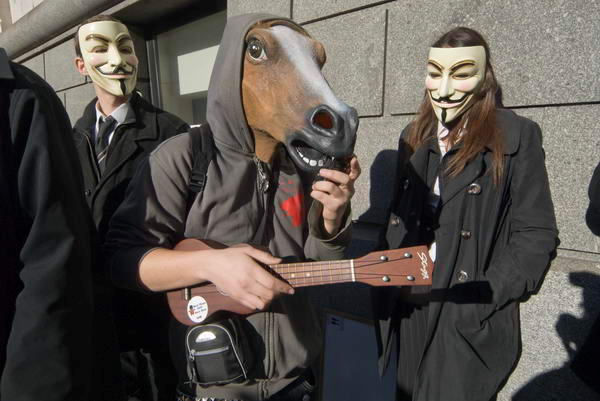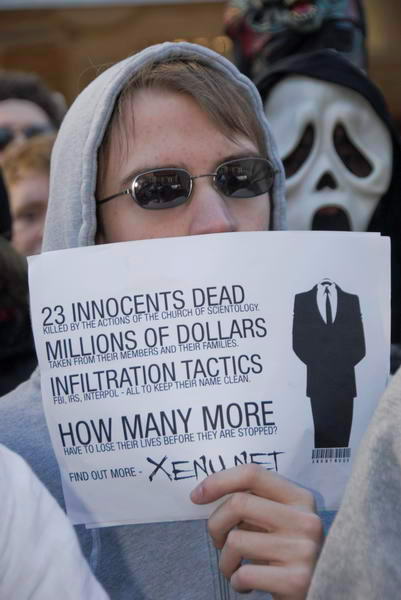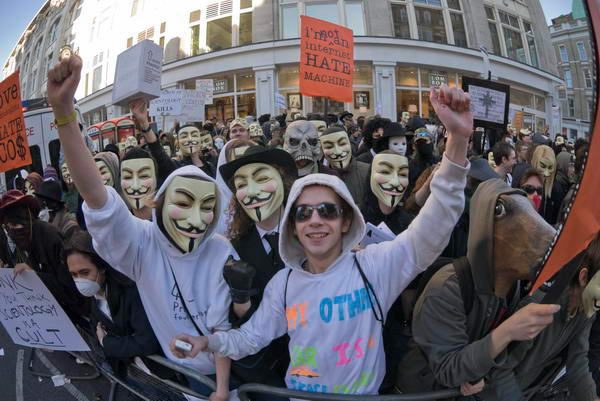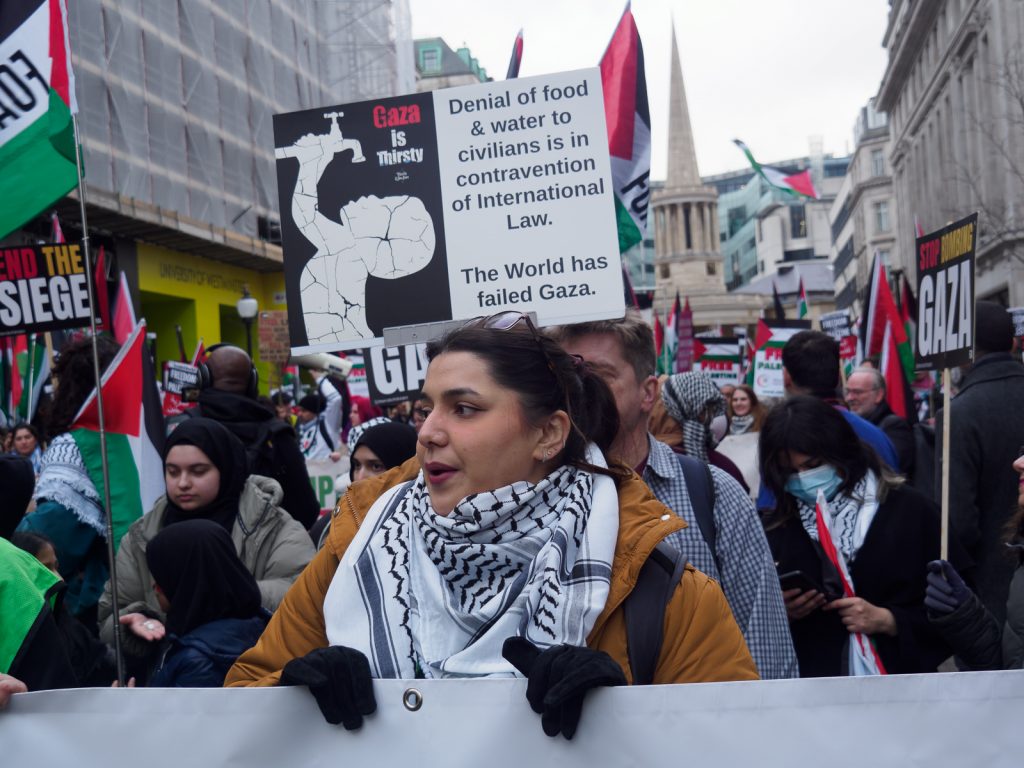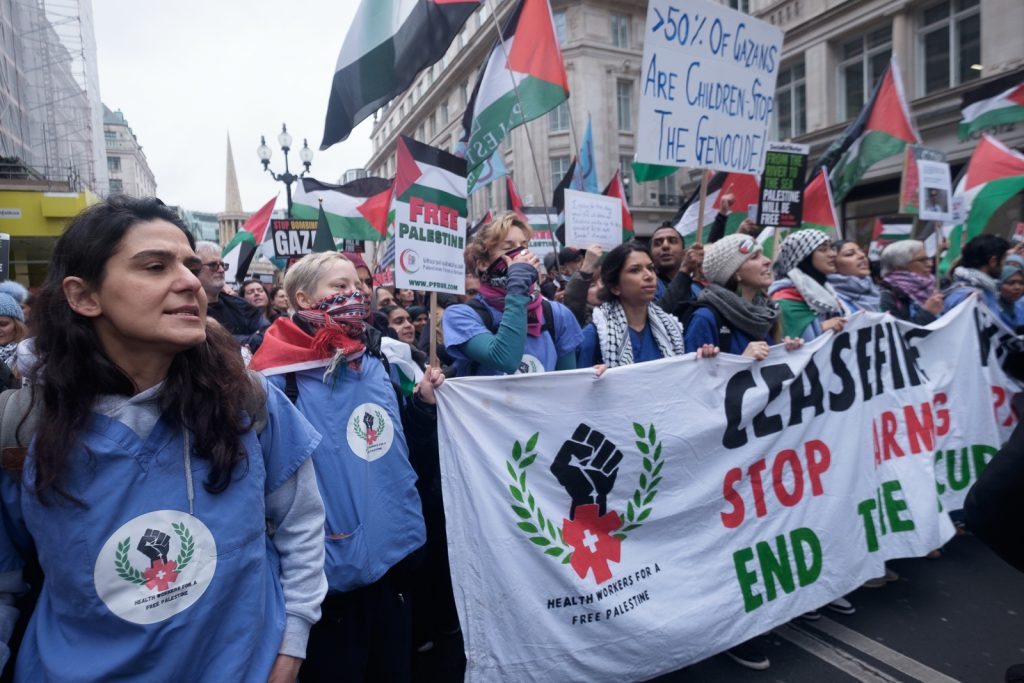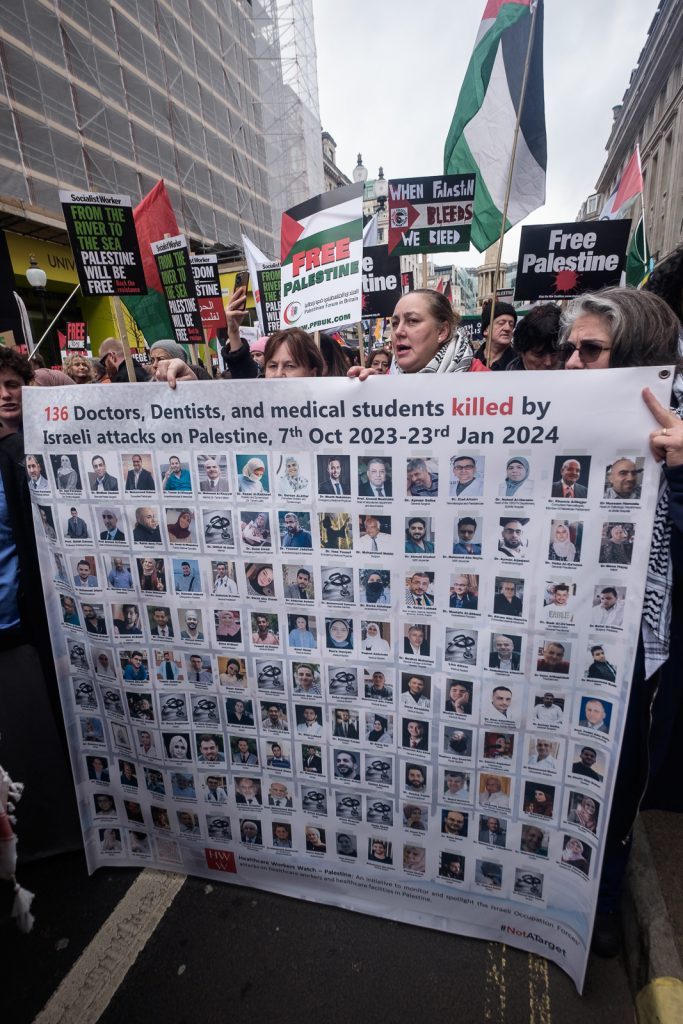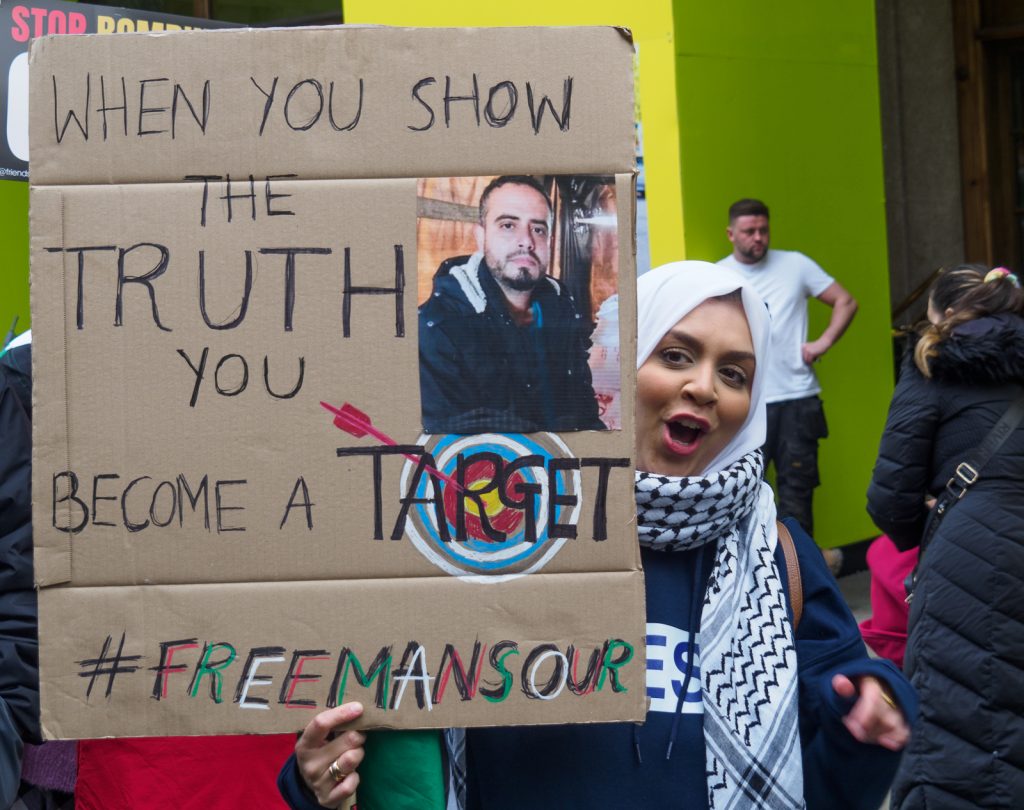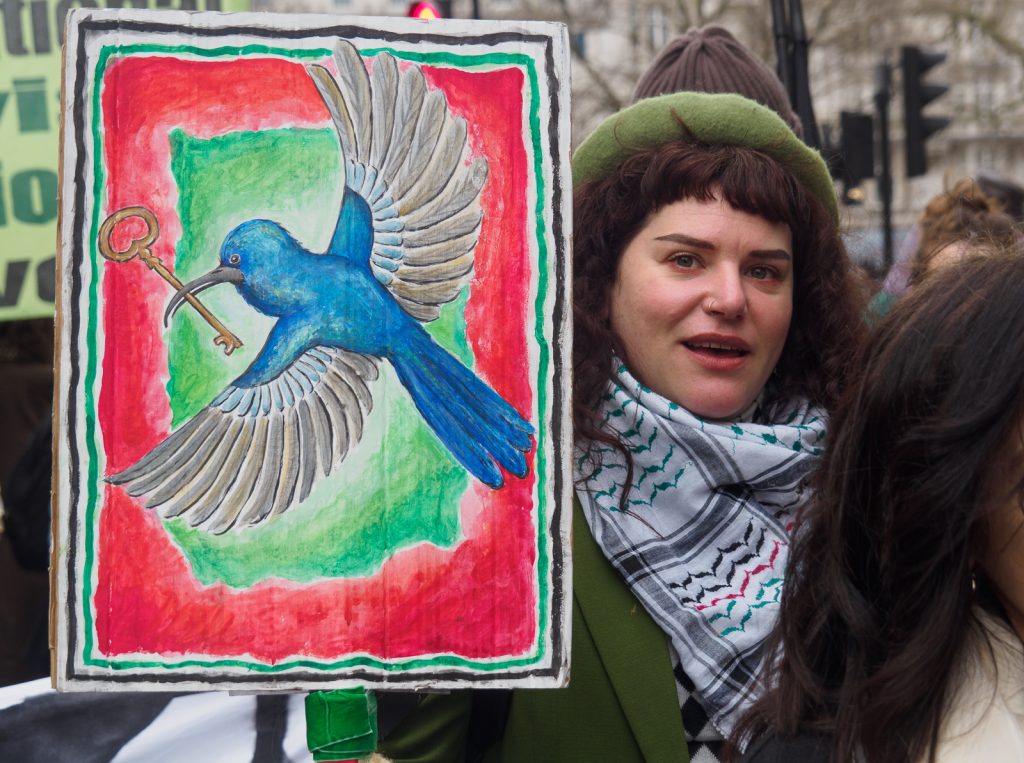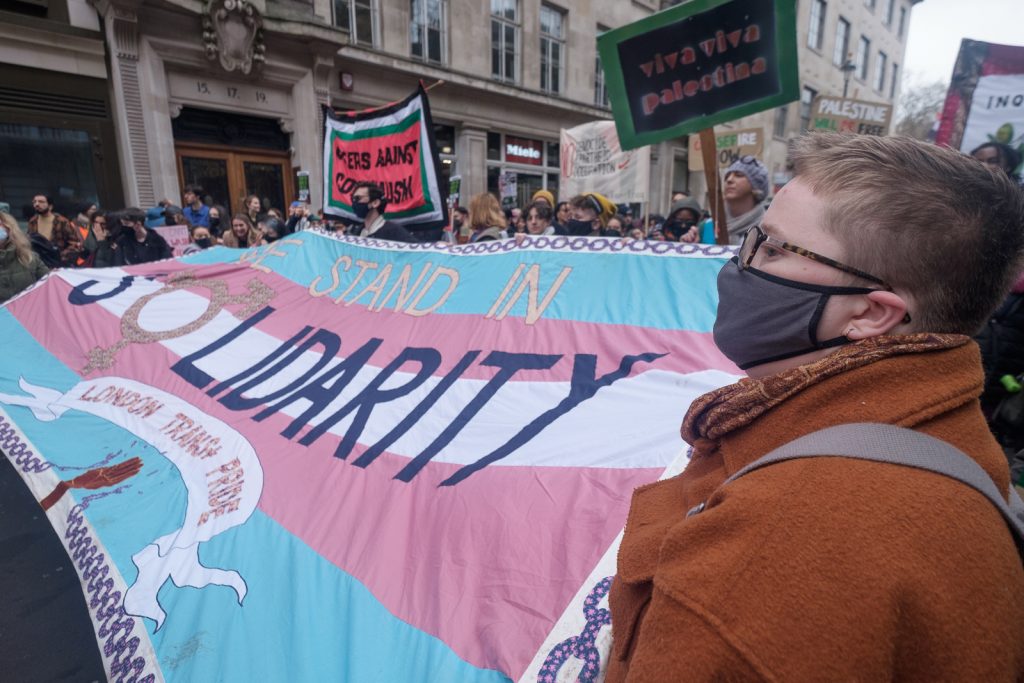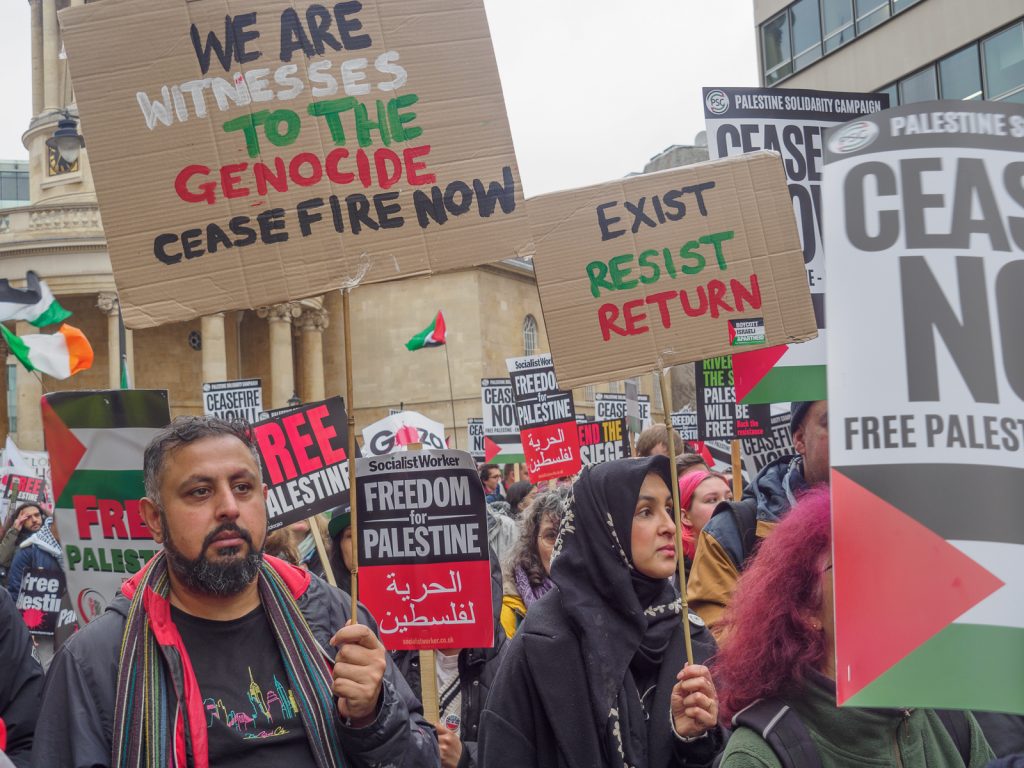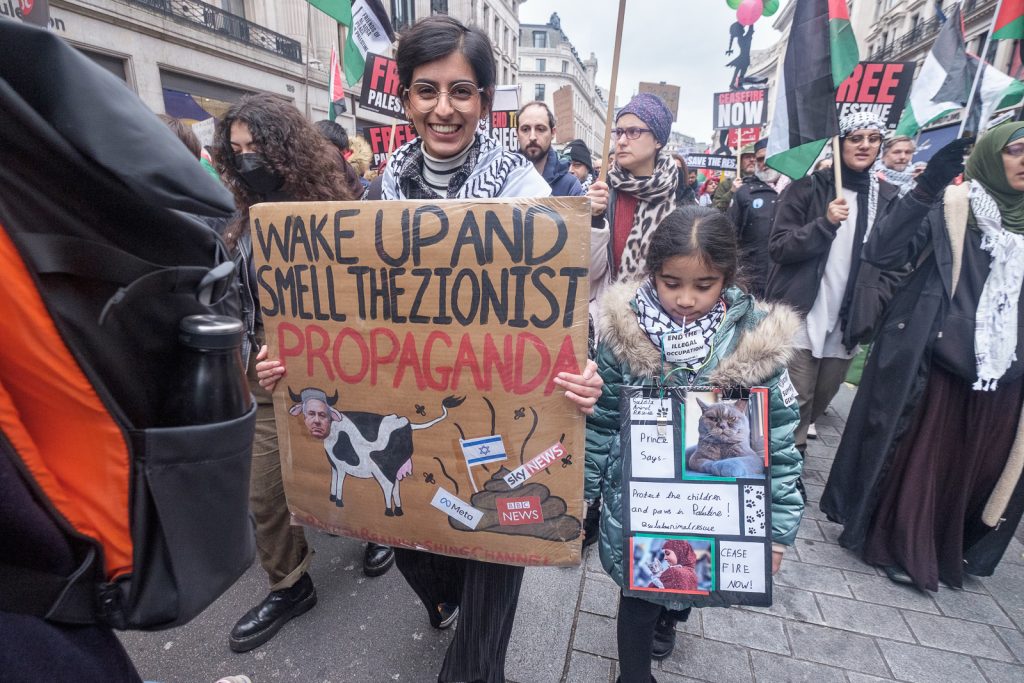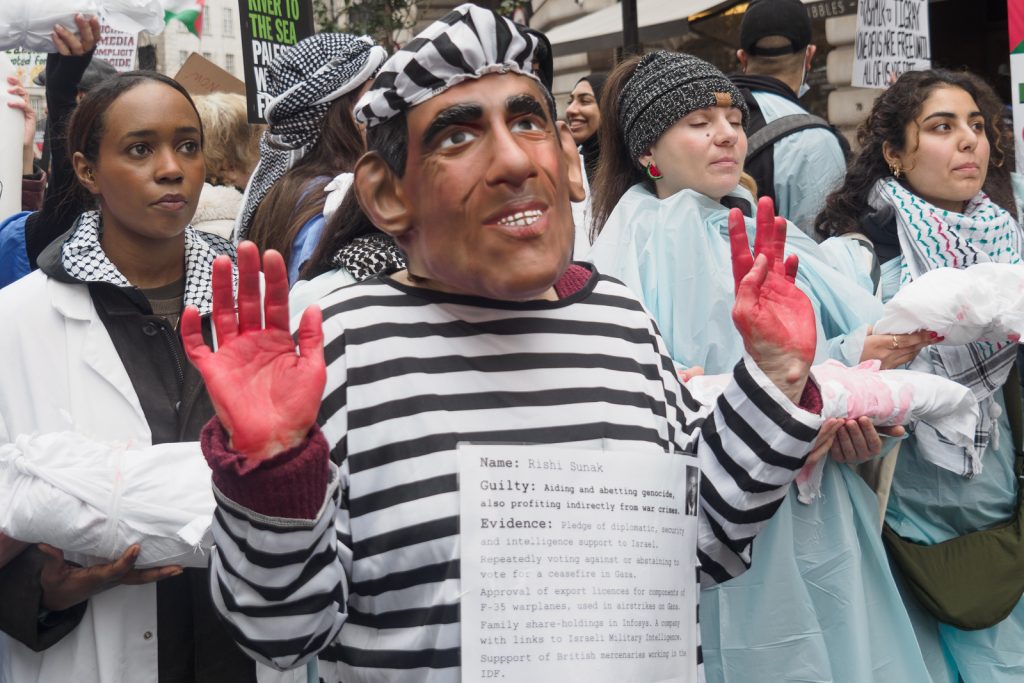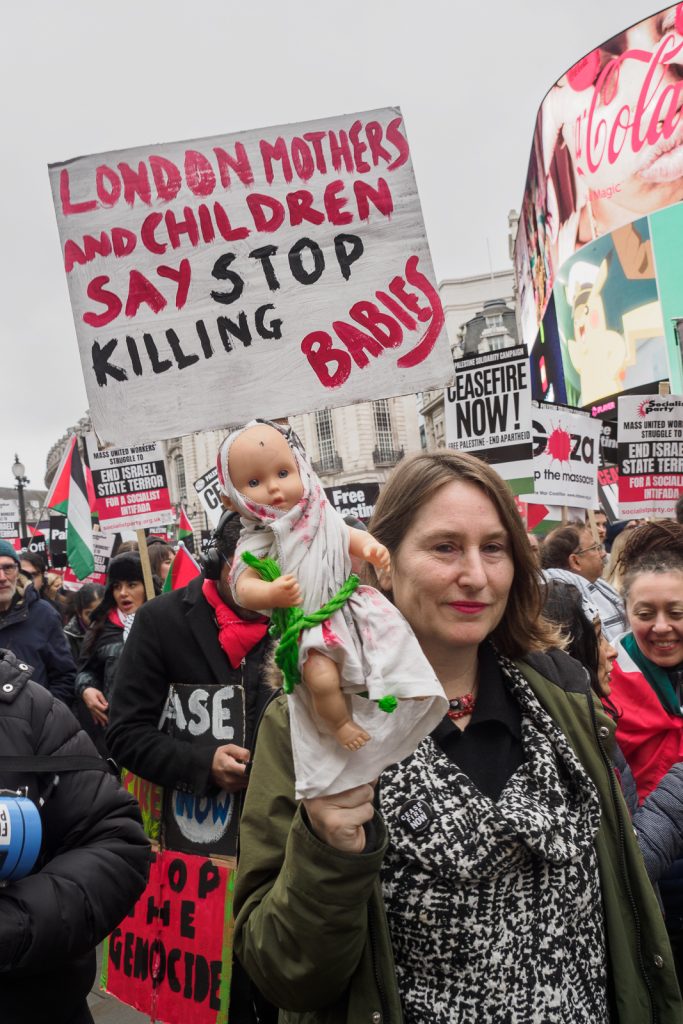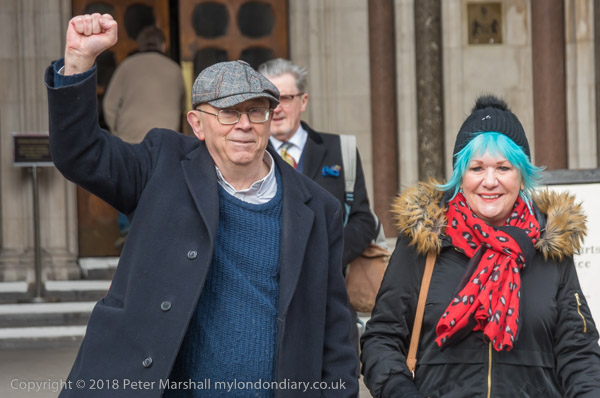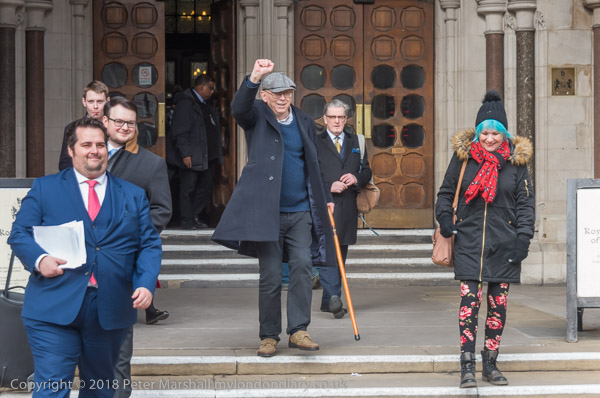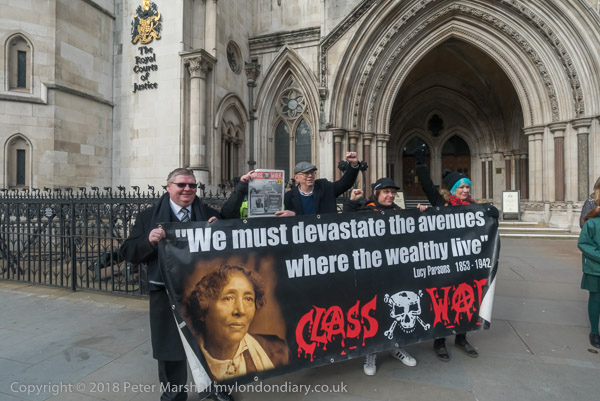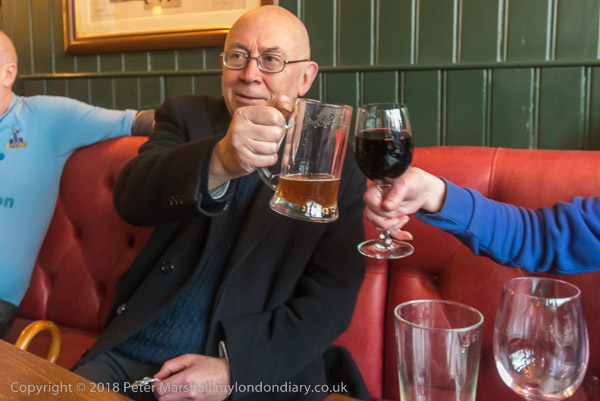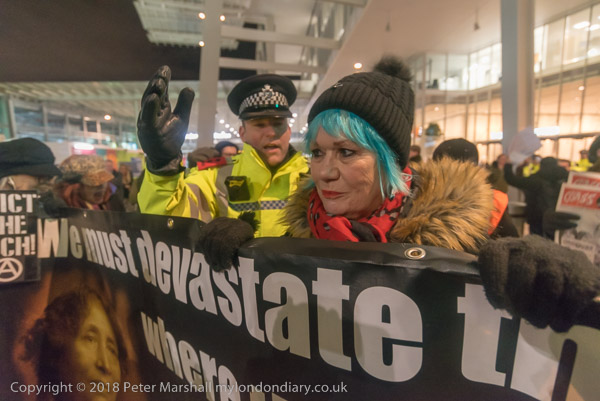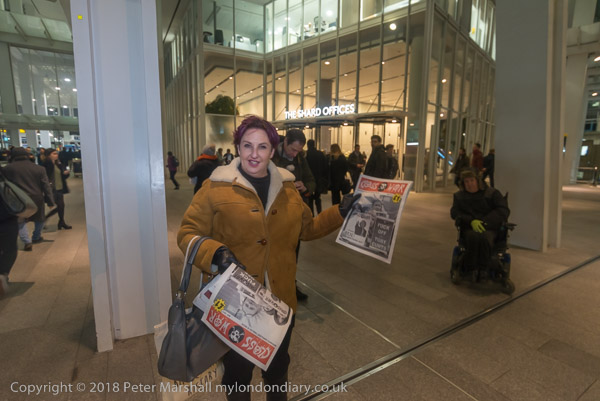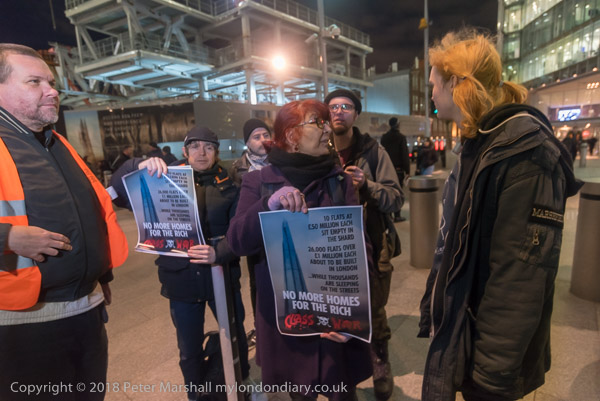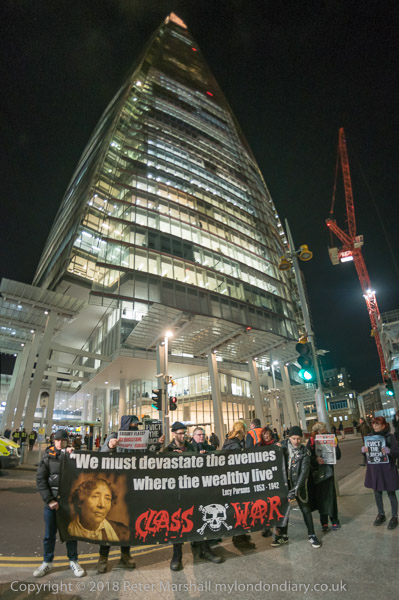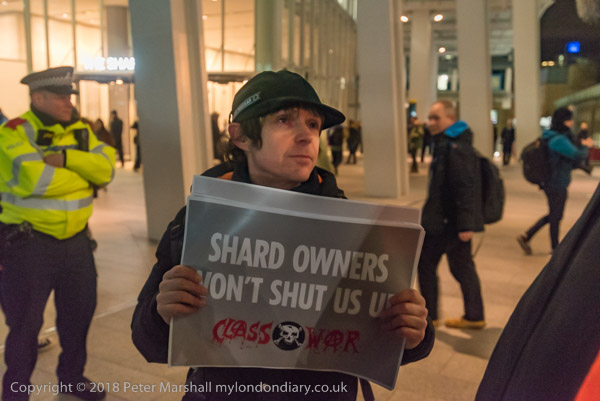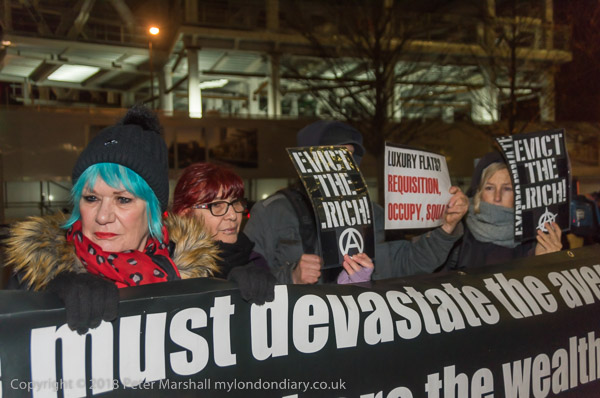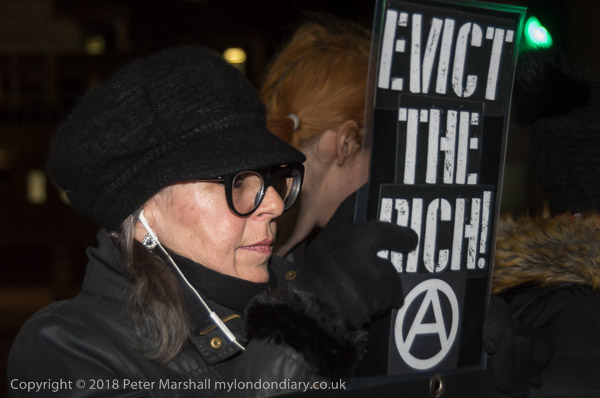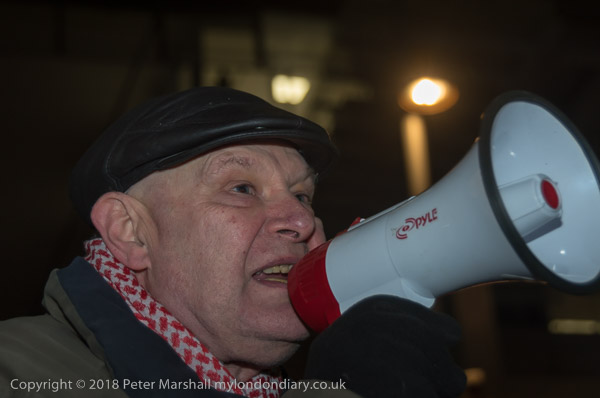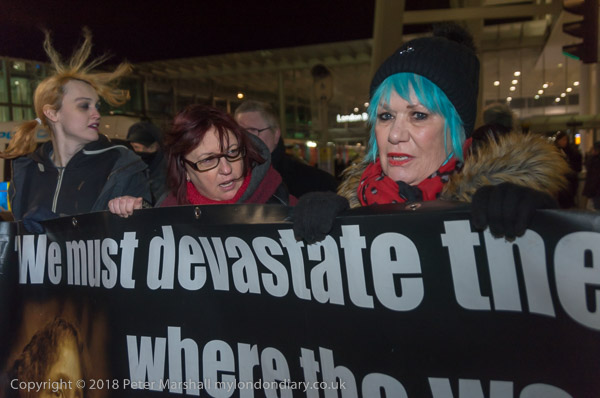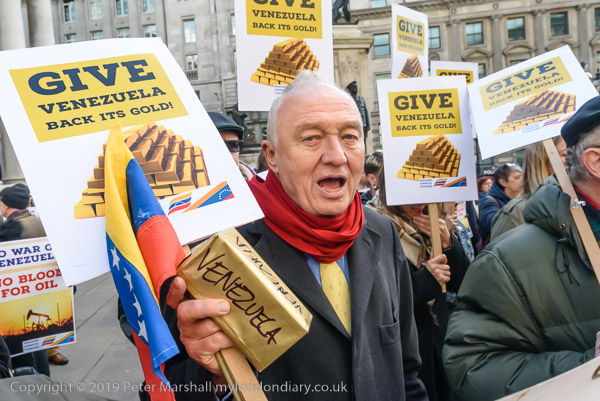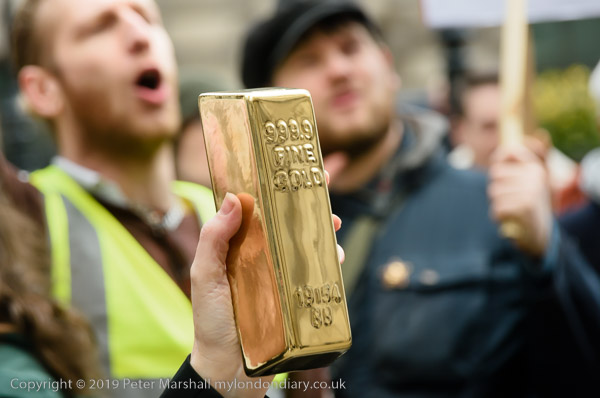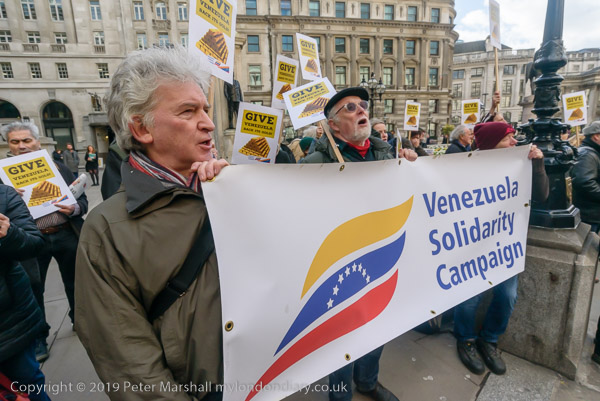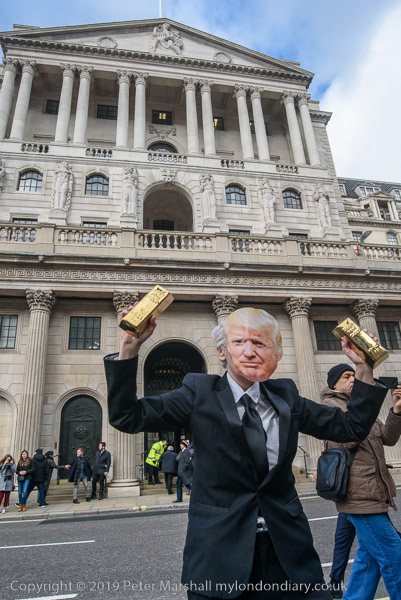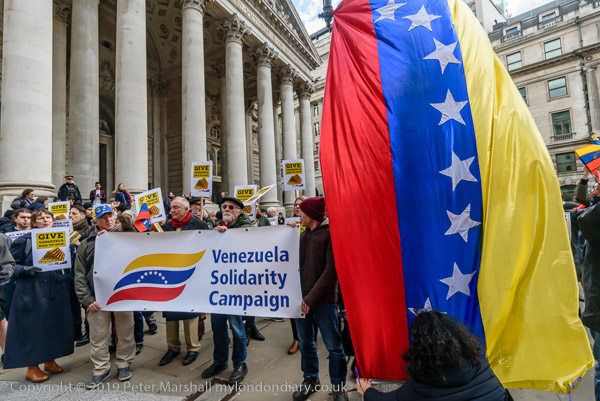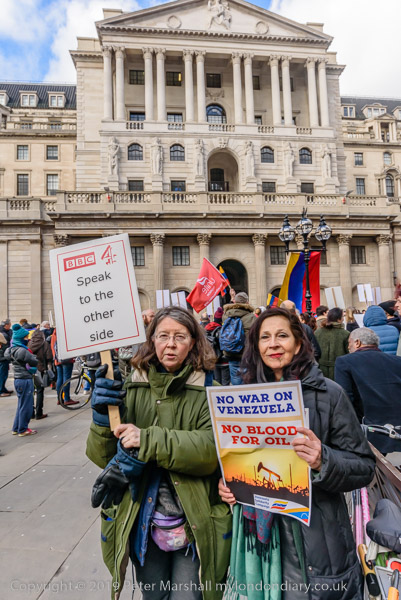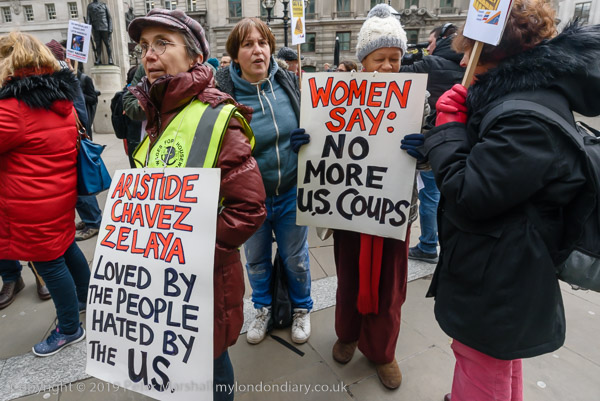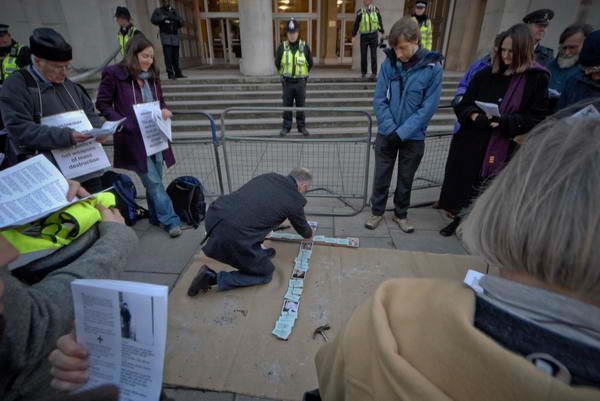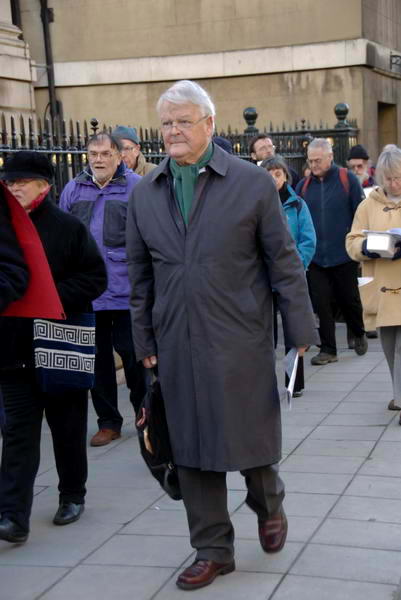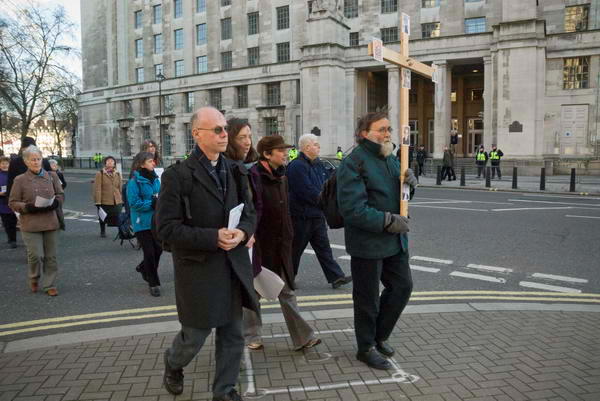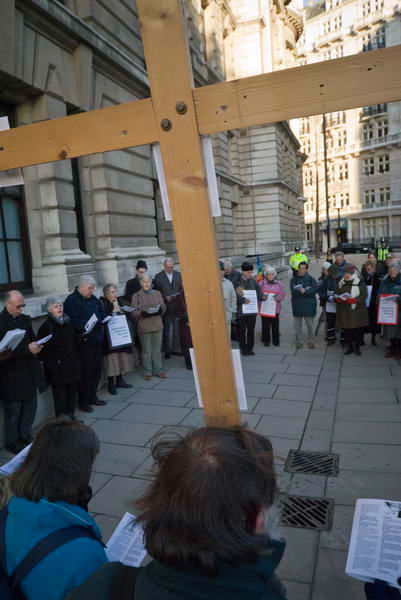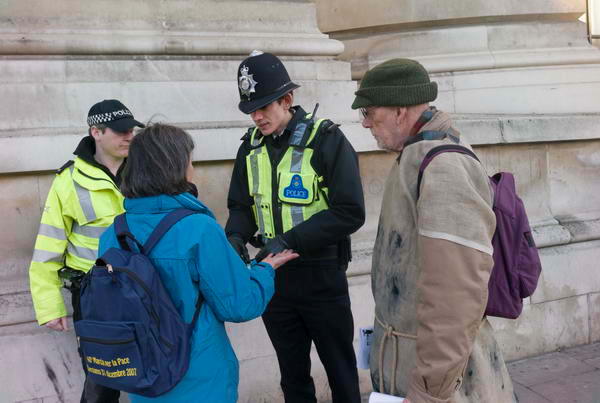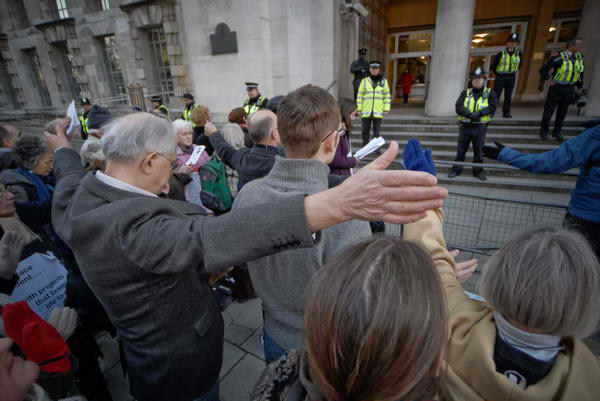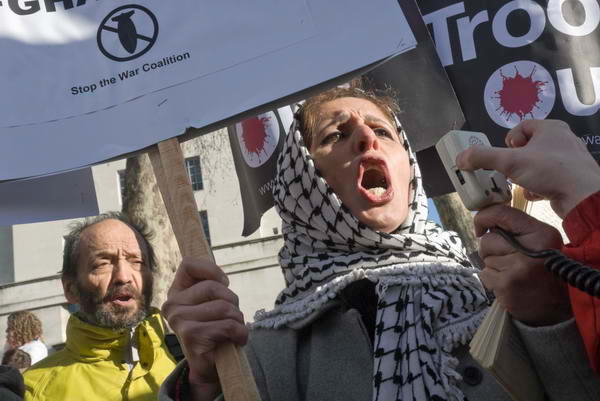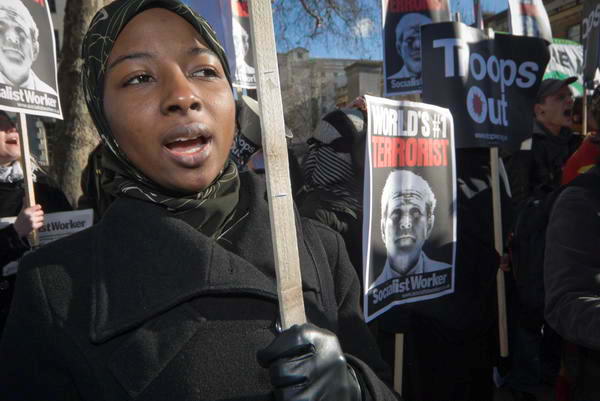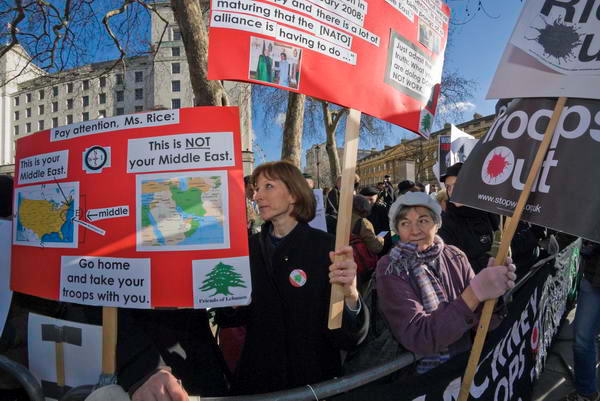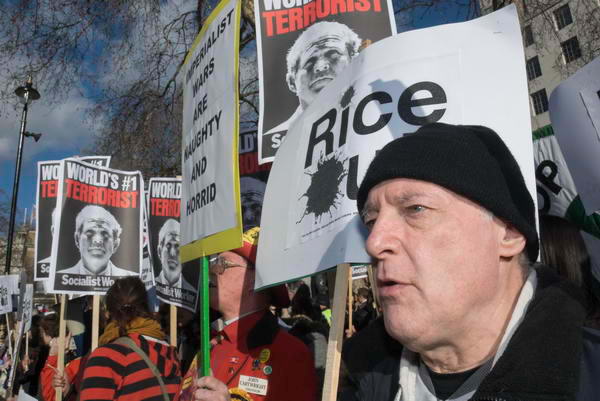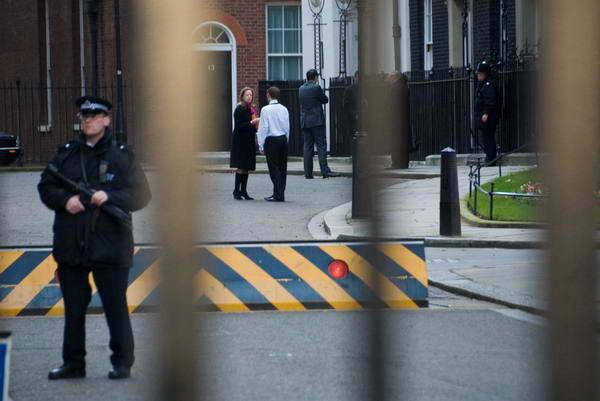Saturday 10th February 2024 – Gaza & Iran – Saturday 10th February was another day of local actions around the country calling for and end to the horrific genocide now taking place in Gaza. I went to two of the local events in London as well as photographing an annual event on the anniversary of the 1979 revolution in Iran, calling for democracy there.
Ceasefire Now – Stop The Genocide In Gaza, Southwark
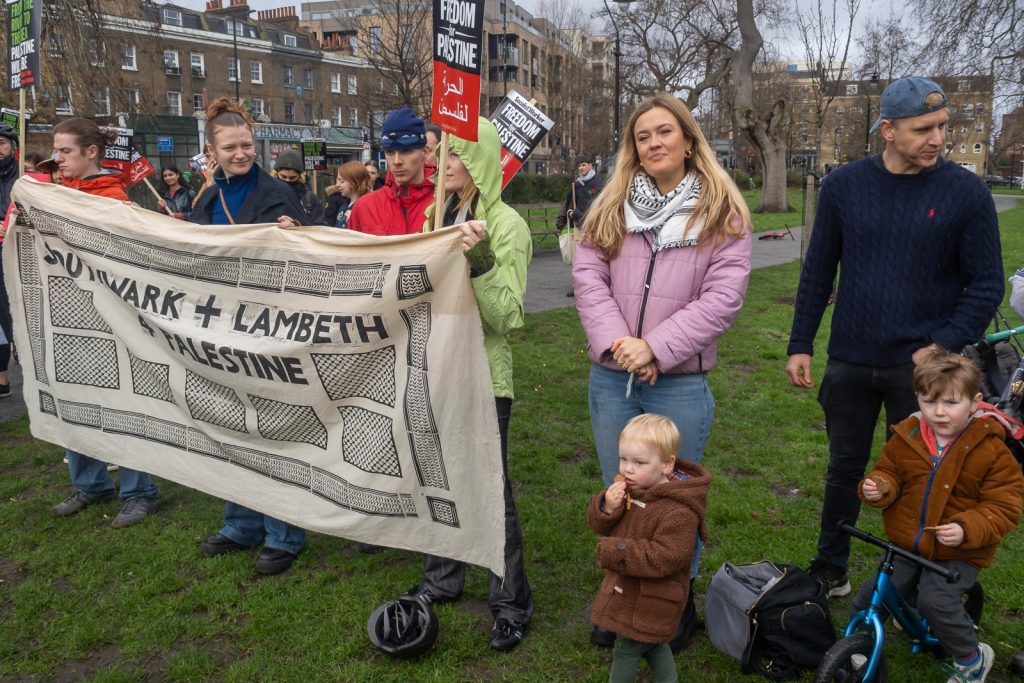
Southwark and Lambeth 4 Palestine had organised another march from Camberwell Green to BAE Systems offices on Southwark Street against the terrible genocide now being carried out by Israeli forces in Gaza. It turned out to be rather smaller than previous local marches, perhaps because many people in the area had demonstrated in workplace-based protests earlier in the week.
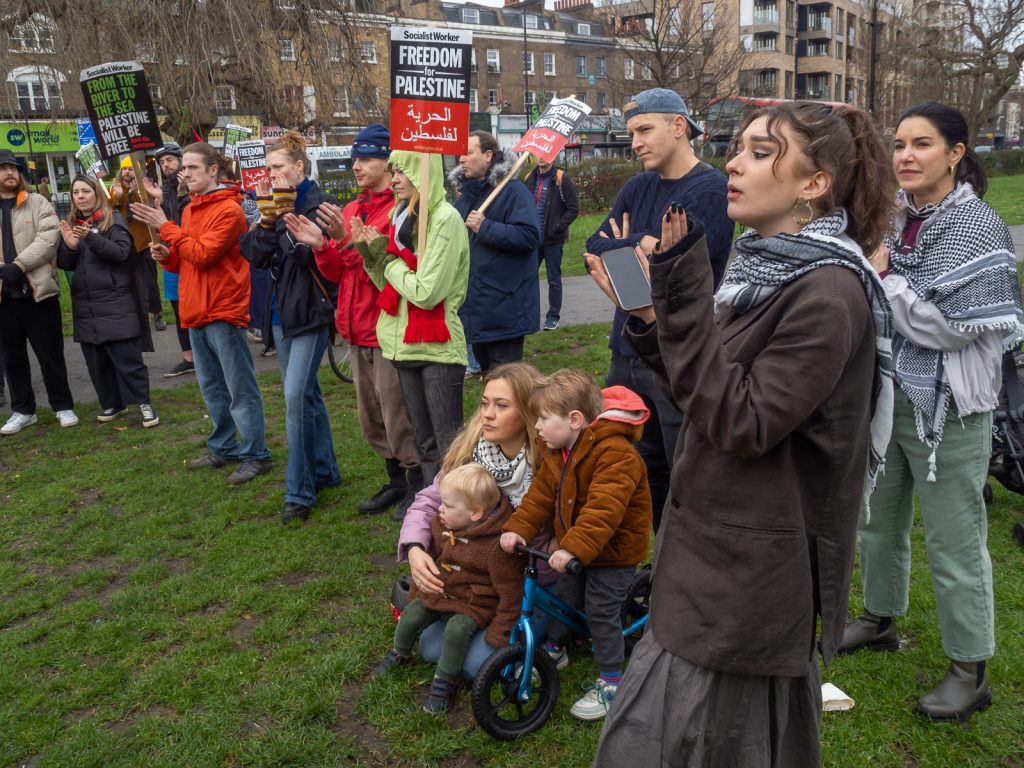
The event started with a few short speeches on Camberwell Green, including one from a student activist from the UAL at the Elephant where they had had a large protest. She talked about how she had been inspired by the example of Brian Haw’s protest over many years in Parliament Square who had carried on calling for peace and an ending to the killing of children until shortly before his death in June 2011, almost ten years after his protest there had begun.
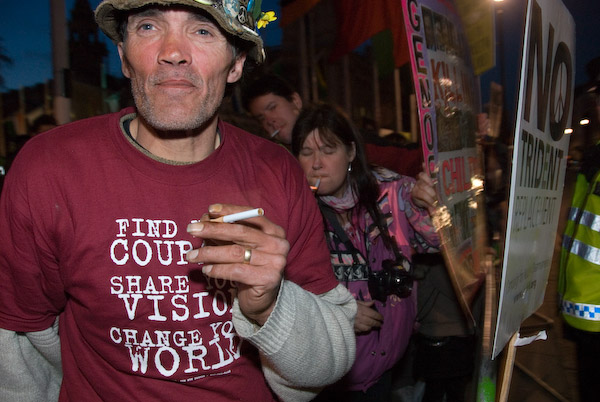
(T-shirt from Dan Wilkins, The Nth Degree.)March 2007, Peter Marshall
I got to know Brian well, going to speak with him every time I went to photograph in Westminster and often photographing him, as you can see on-line at My London Diary. He suffered regular harassment from police, council officials and thugs encouraged by the authorities, some of whom were I think plain clothes officers or military. An Act of Parliament was passed largely to try to end his peace camp there, though it also severely restricted other protests within a kilometre of Parliament.
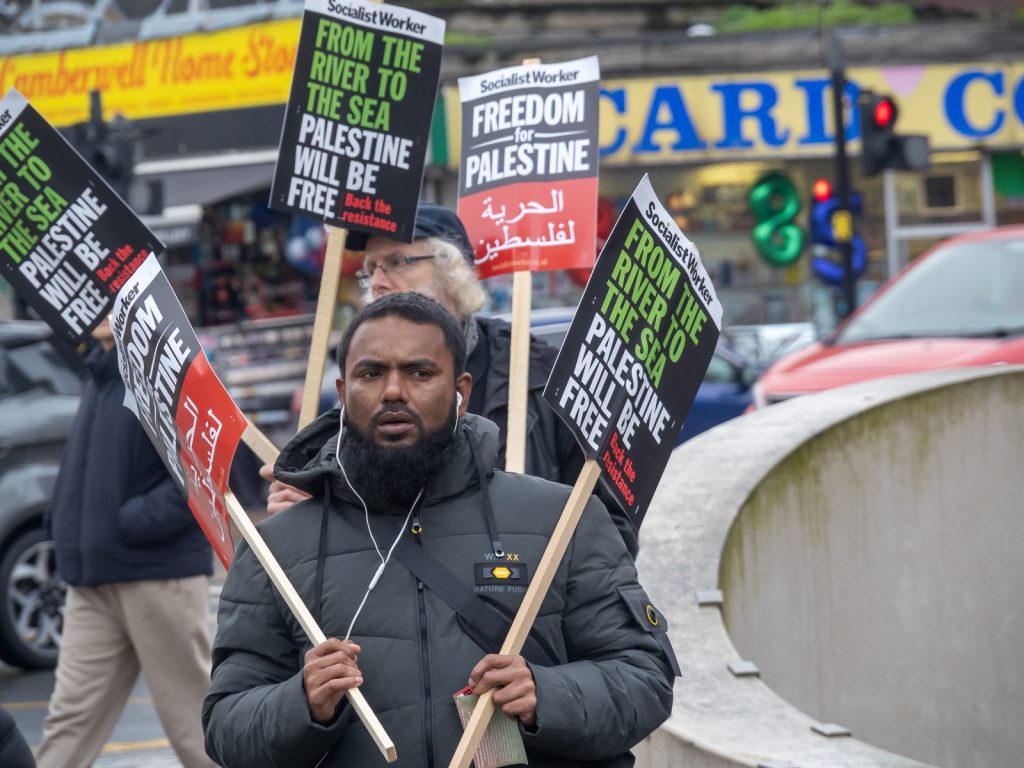
Later, after his ill-health took him to hospital, his protest there was continued by Barbara Tucker who had joined his campaign there in 2005. She was subjected to even more severe police harassment, was arrested at least 47 times and served two periods in prison, of two weeks and nine weeks. In January 2012 police removed her protection against the elements – tent, blankets and sleeping bag and later they came back for her chair. She continued to protest there despite needing hospital treatment for exposure until May 2013.
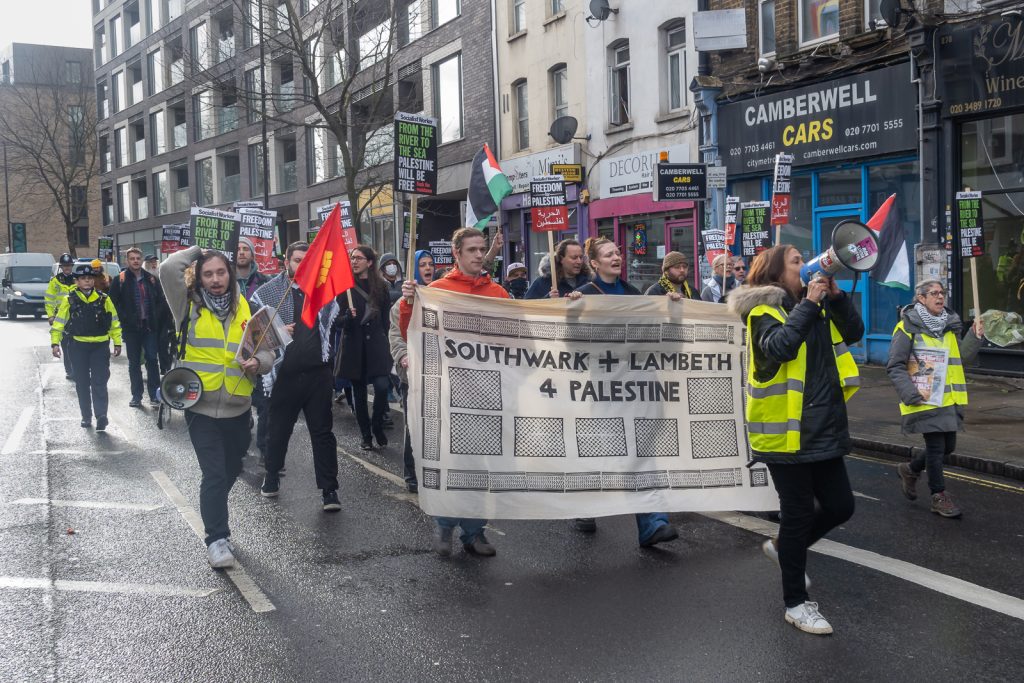
The march set off with around a hundred people marching behind the banner though more joined the later at the end. There was considerable support from people on the roadside, particularly when it went past the busy section of Walworth Road close to East Street Market, and many drivers going in the opposite direction beeped their horns in support. Although the UK government continues its support of the Israeli genocide clearly the majority of the British people do not.
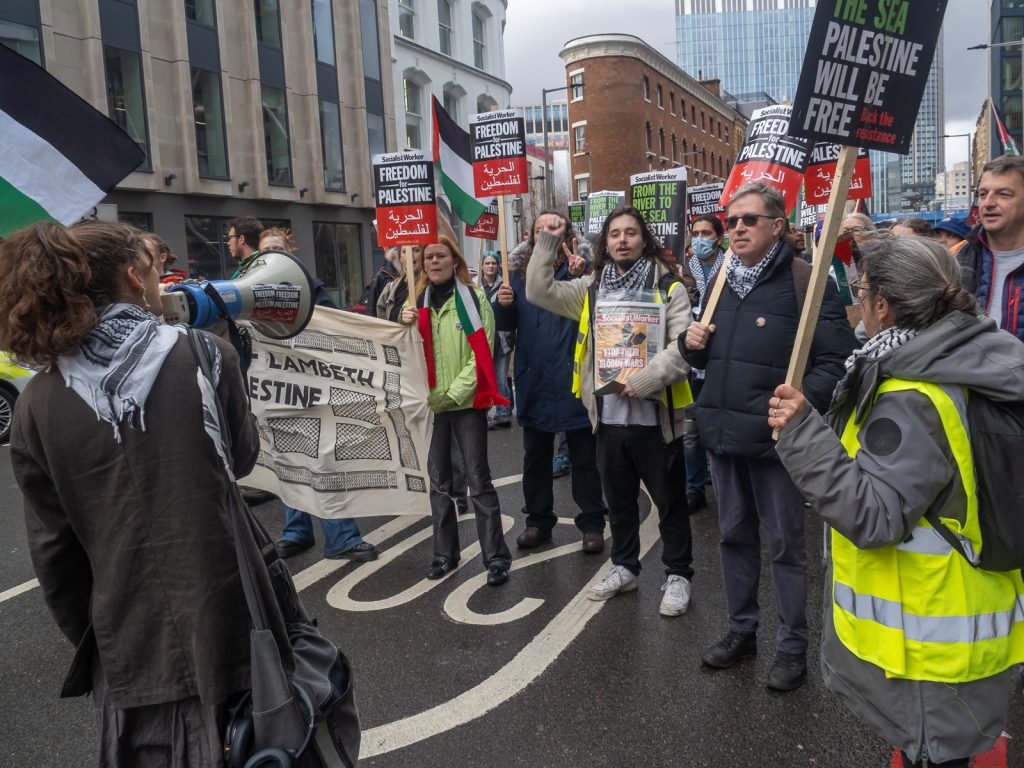
I found it a rather long march – well over two and a half miles – and was wishing I’ve brought my bicycle by the time we got to the Bluefin Building on Southwark Street. The march stopped for a few minutes in front of the building where BAE Systems have offices on an upper floor.
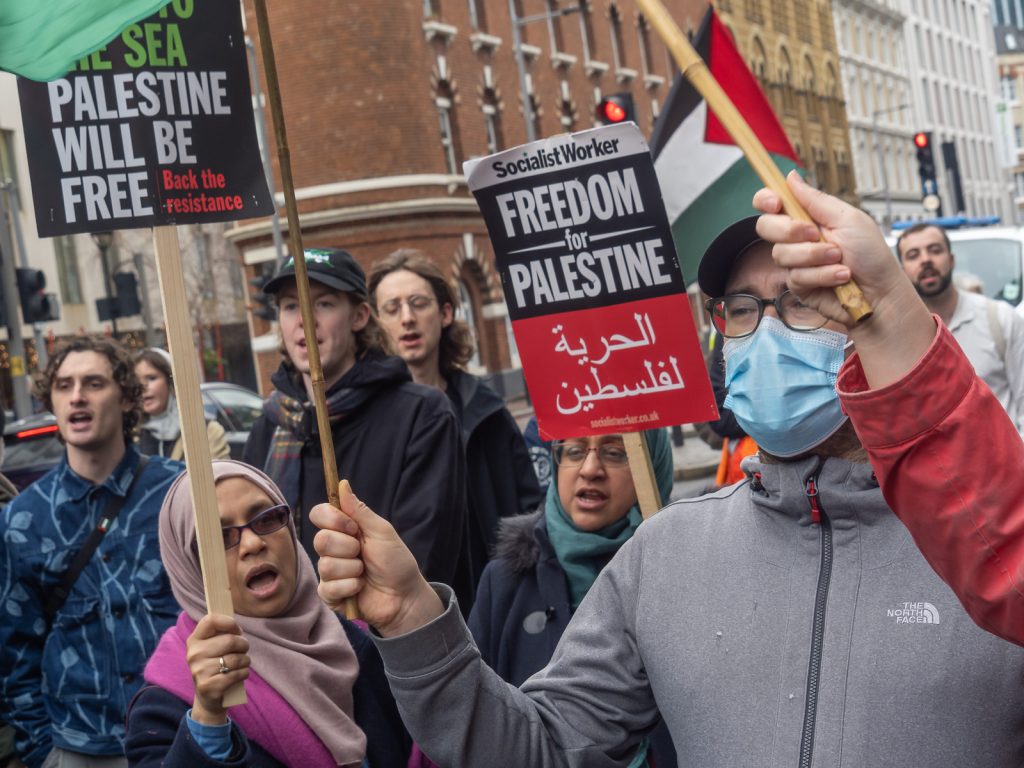
BAE Systems is the world’s seventh-largest military contractor, and the largest in Europe and supplies Israel with a wide range of weapons which for years have been used against Palestinian citizens and civilian infrastructure “including hospitals, schools, and water and electric systems.” There is much more about their activities in arming Israel on the American Friends Service Committee web site.
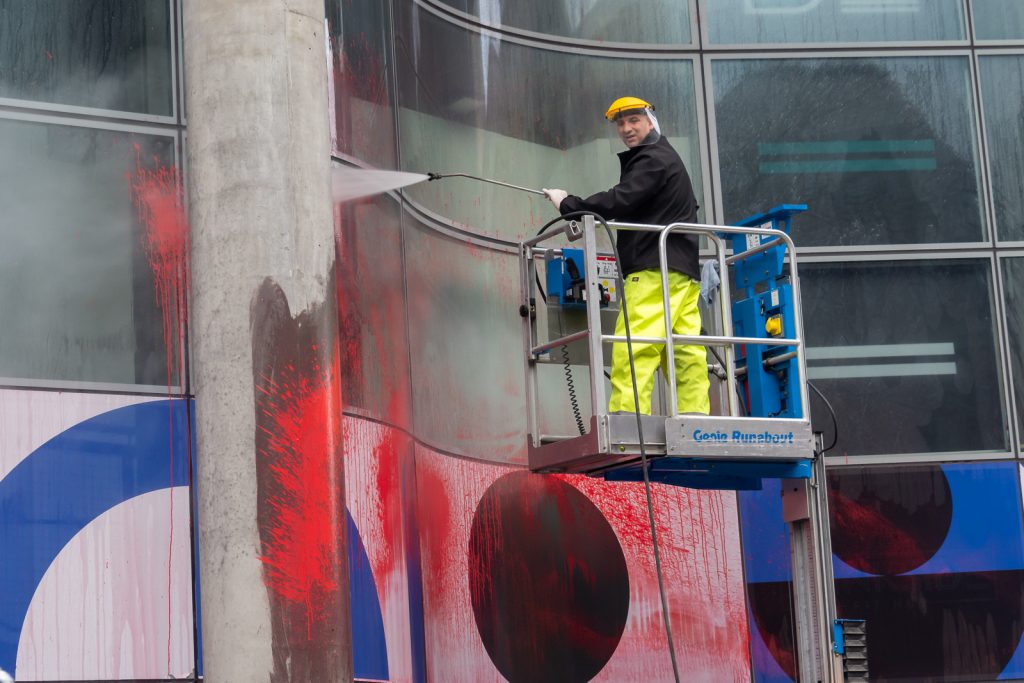
When we arrived at Bluefin, we saw that others had been there before us, and a large area of the frontage had been sprayed with red paint. A team of contractors were busy cleaning it off. I took a few pictures of them as the marchers moved off down the side of the building for another rally, but I walked back to Southwark Station to catch the Elizabeth line to Westminster.
More pictures online and available for use on Alamy.
Iranians Call For Freedom and Democracy in Iran
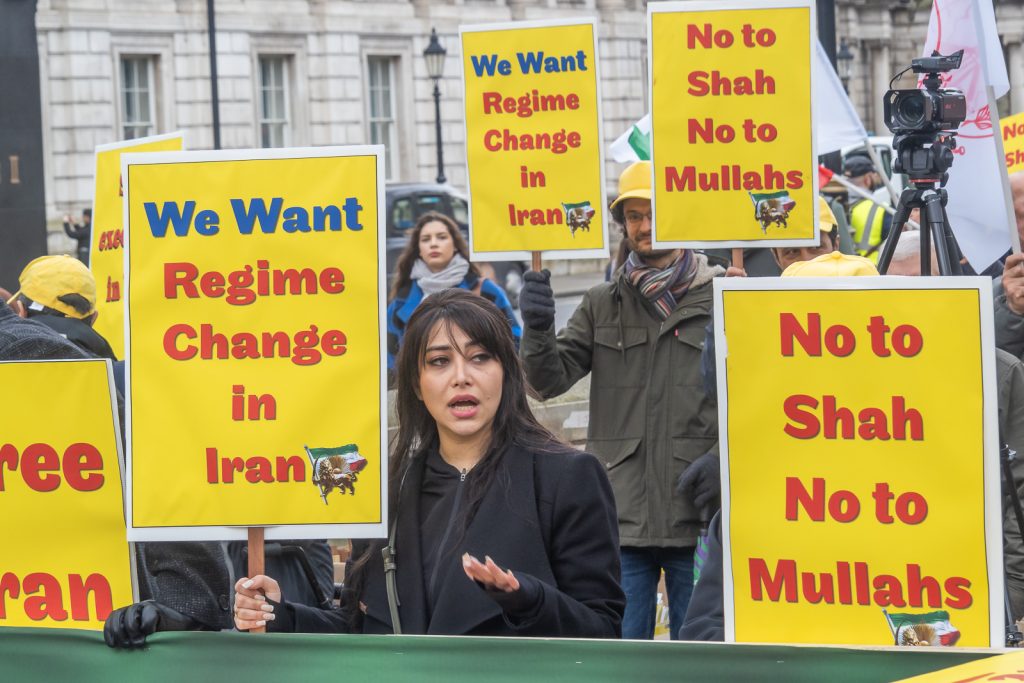
45 years after the Shah of Iran was forced into exile by a popular revolution following repression under the Pahvlavi regime, the Anglo-Iranian community and the National Council of Resistance of Iran call for a new revolution to end the oppressive theocratic regime with democracy and for the UK to declare the Islamic Revolutionary Guard a terrorist group.
They say Khomeini who had been invited back by the acting government after the revolution stole the leadership of the country revolution in a rigged vote, imposing the current oppressive theocratic regime.
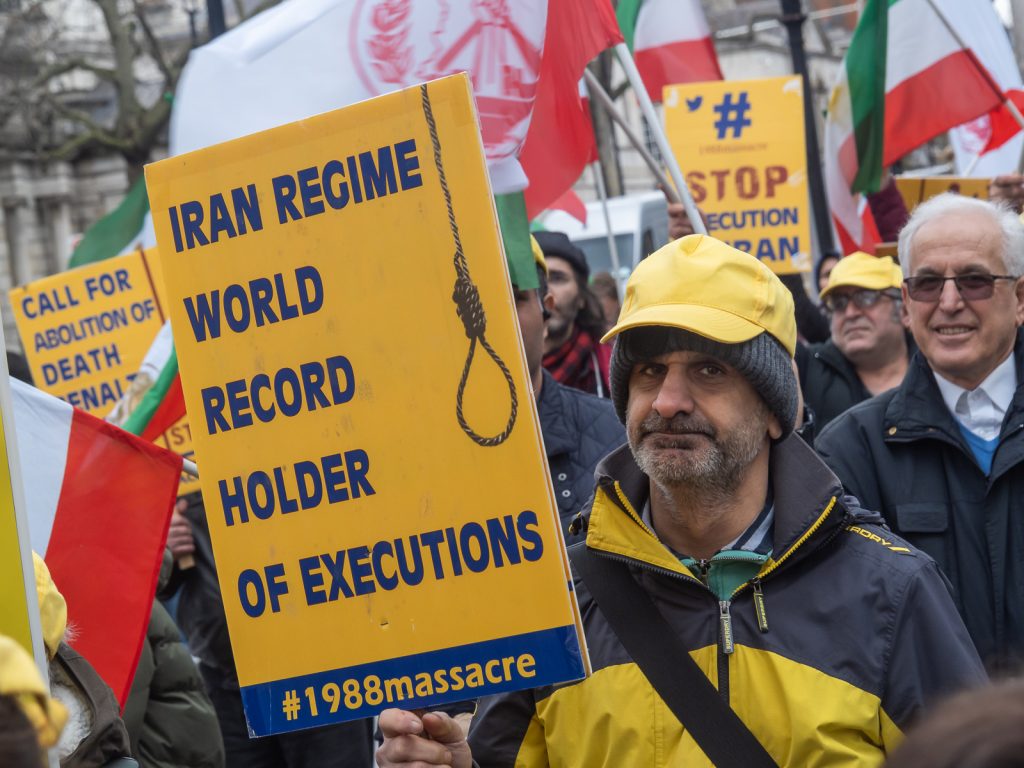
The National Council of Resistance of Iran (NCRI) has put forward a ten point plan for a future democratic republic in Iran, with secular government, democratic elections, freedom of expression, equal rights for women and human rights and an independent judiciary and legal system.
The NCRI is a coalition with representation from five bodies, the major of which is the People’s Mojahedin Organization of Iran (PMOI), which currently has its headquarters in Albania. It was largely disarmed after the US/UK invasion of Iraq and its camp in Iraq was attacked after US forces withdrew.
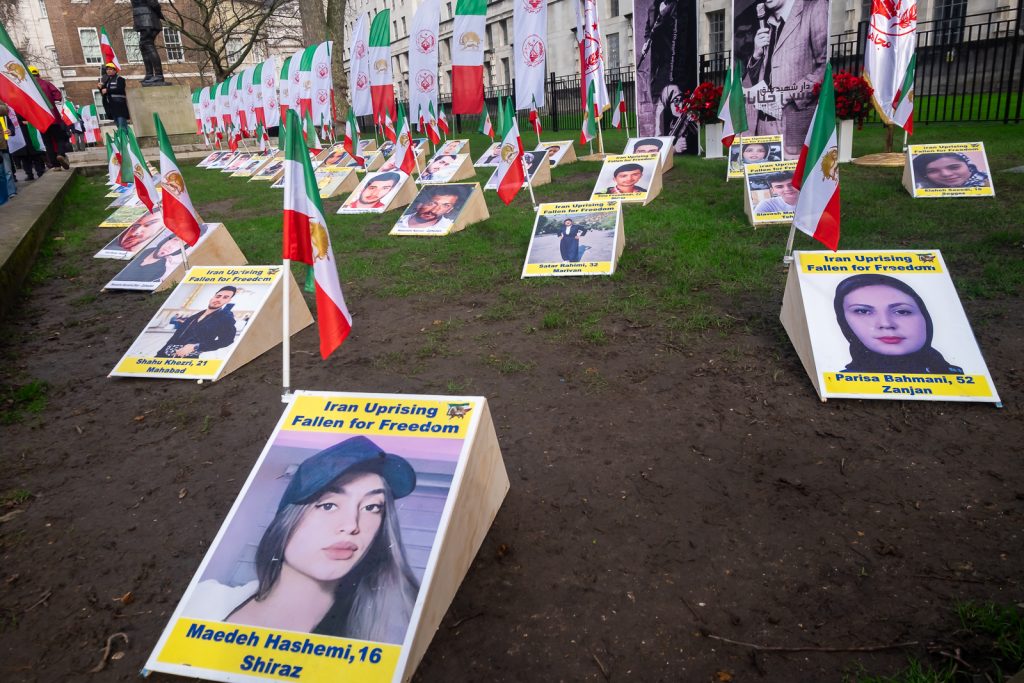
On Feb 1st this year, the House of Commons agreed to a motion in support of freedom and democracy in Iran. The motion condemns the violent state crackdown on the protests and urgest the government to proscribe Iran’s Islamic Revolutionary Guard Corps.
As I left the protest, two men came to try and disrupt the protest and there were brief scuffles as security and others tried to move them away. After a few minutes police came and held one of them, talking to him and suggesting he leave – the other was already a few yard down the road.
More pictures online and available from Alamy.
Ceasefire Now – Stop The Genocide In Gaza, Ealing, London, UK

I was on my way to Ealing, fortunately a much faster journey now the Elizabeth Line goes to Ealing Broadway, although I still arrived well after the rally outside the town hall there had started. There was a large crowd around the steps on the main road in front of Ealing Town Hall, another of the many local protests around the country calling for an immediate ceasefire and an end to the genocide in Gaza which has now killed 28,000 mainly women and children and severely injured around 68,000.
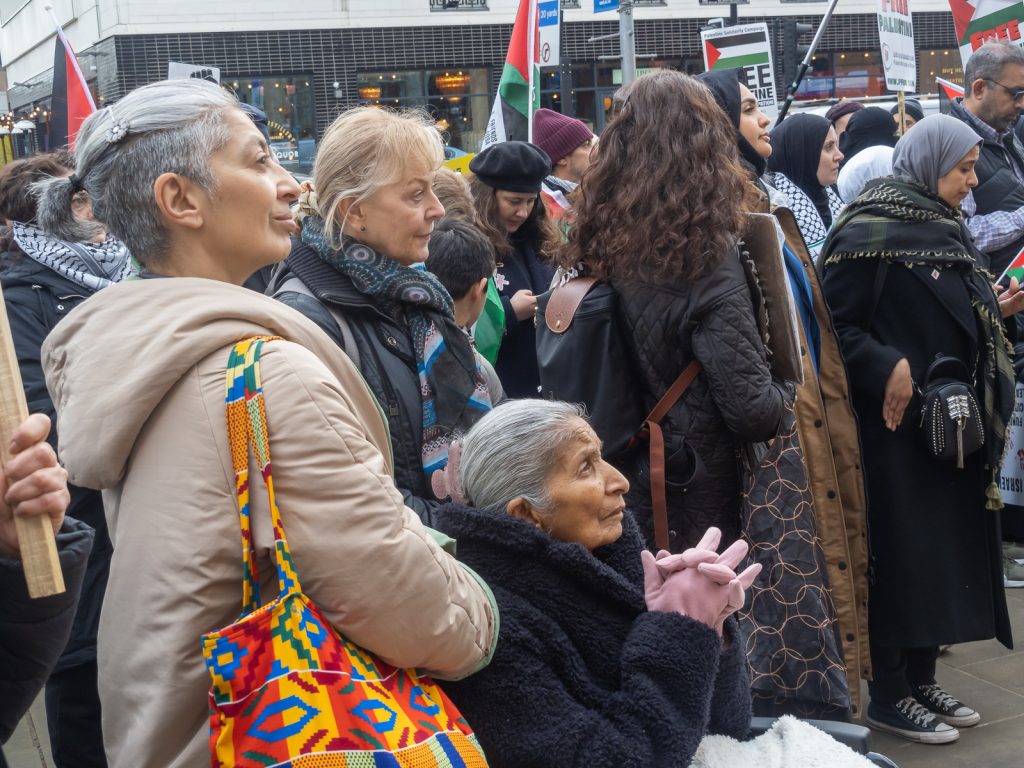
The entire population of Gaza is now living in desperate conditions with constant threat of bombing, shelling, famine and disease. Speakers condemned the failure to respond to the ICJ ruling to prevent acts of genocide and for the continued killing taking place there with precision targeted attacks on ambulances, aid workers, schools, hospitals, refugee camps, medical staff, journalists and others.
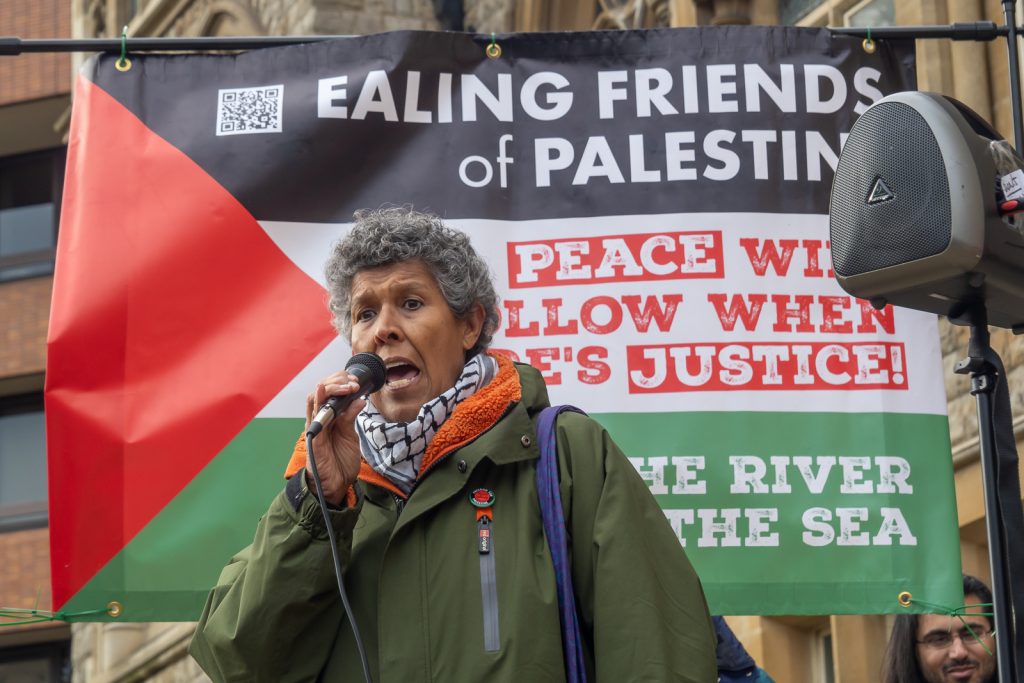
I think most of the speakers were from Ealing and Southall, but Grenfell campaigner Moyra Samuels had also come to speak both about the shameful attack on Gaza and also share some experiences of campaigning over the Grenfell fire, where continued protests had helped to keep the fight for justice alive – though there is little sign of justice so far.
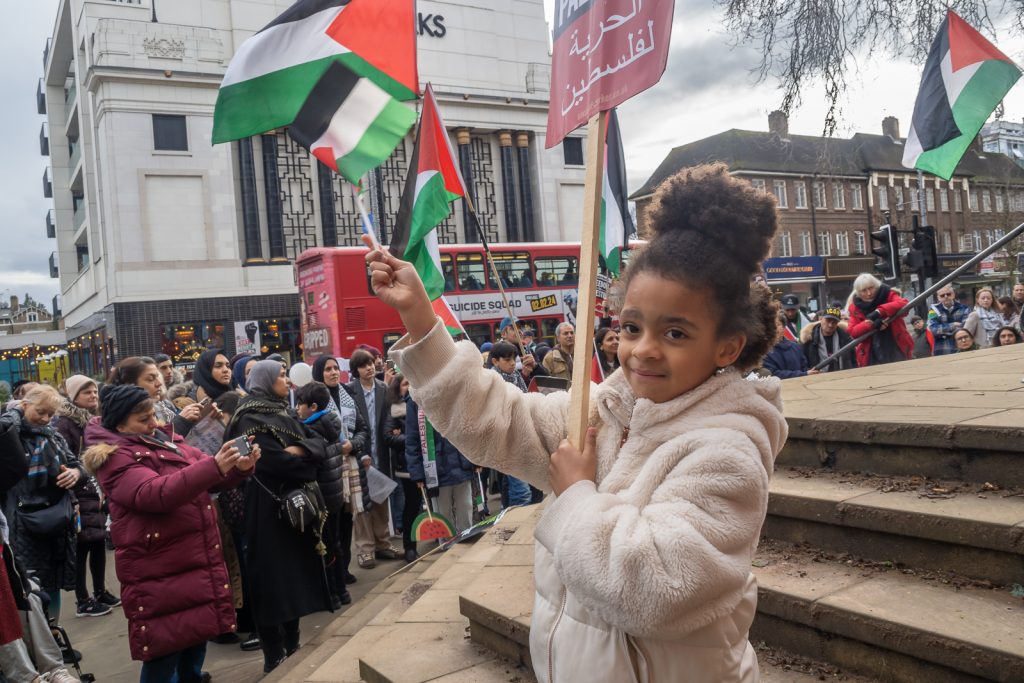
I left as the rally was coming to a close, taking my final pictures of it from the top deck of the bus which was taking me to Brentford and a train home from there.
More pictures online and available from Alamy.
Flickr – Facebook – My London Diary – Hull Photos – Lea Valley – Paris
London’s Industrial Heritage – London Photos
All photographs on this page are copyright © Peter Marshall.
Contact me to buy prints or licence to reproduce.
